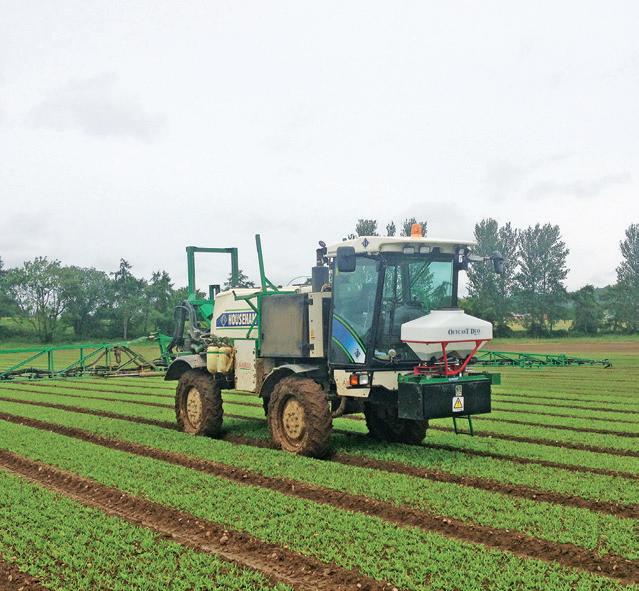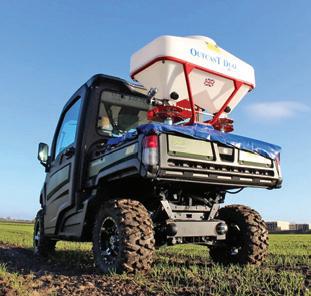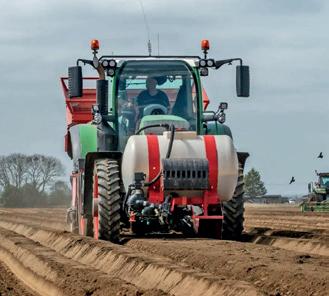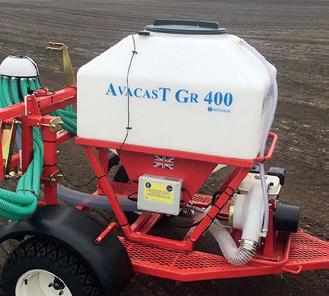Midland Farmer


News
Rishi
Arable
Water Tax breaks needed to encourage investment

















ALLEVIATES PRESSURE POINTS








News
Rishi
Arable
Water Tax breaks needed to encourage investment

























“Flexibility is key when it comes to crop protection, and that’s what Kantor® gives us”
Luke Medd, Partner, N Medd and Son, County Durham






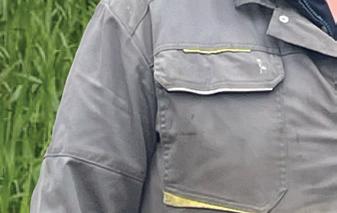





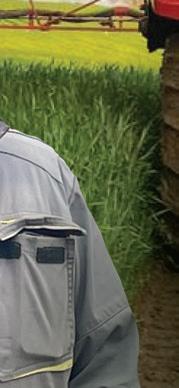


Scan the QR code to read Luke’s story


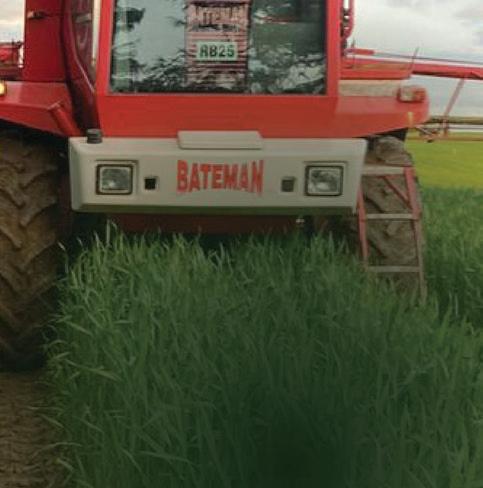
The go-to-adjuvant for tank mix recovery and complex tank-mixing in a single pass, Kantor® improves the efficiency and effectiveness of all products in your tank.



www.interagro.co.uk

Improved rainfastness and valuable drift reduction extends the spray window for chemical application, keeping you spraying in challenging weather conditions.
Enhanced coverage across plants leads to more effective and targeted control, whilst unique penetrative power helps active ingredients get to work faster, increasing the efficacy of your spray mix.



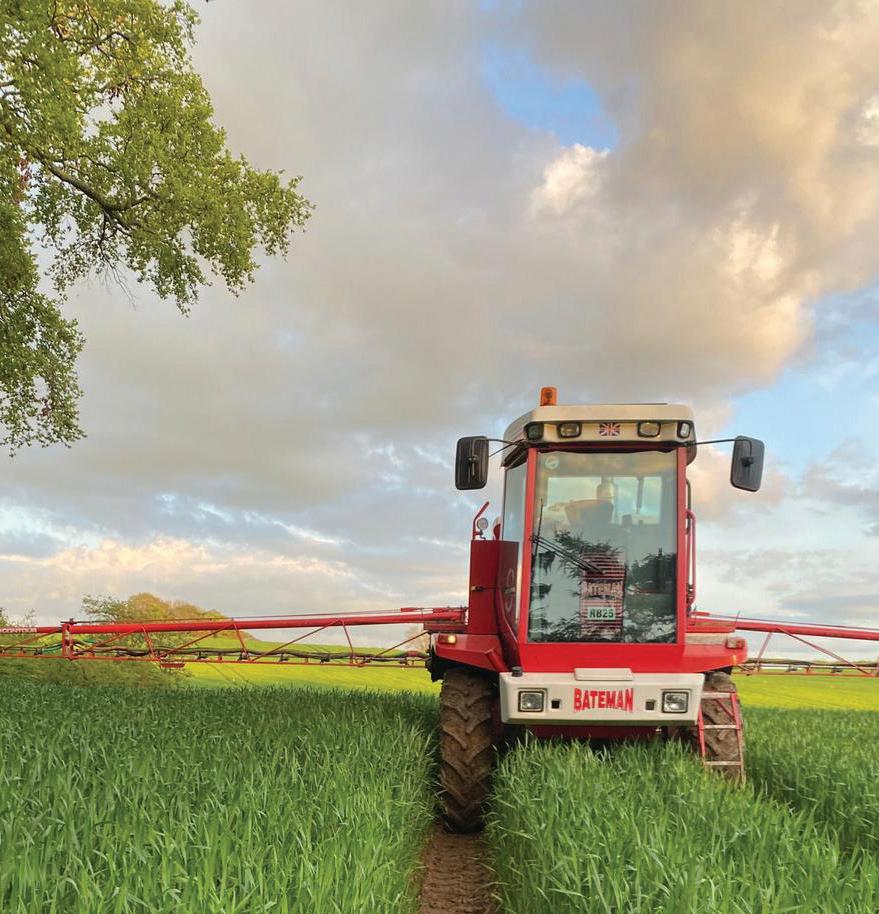








EDITORIAL
Editor:
Johann Tasker | T: 07967 634971
E: johann@ruralcity.co.uk
Design:
Mark Shreeve | T: 01502 725839
E: mark.shreeve@micropress.co.uk
Advertisement production:
Jade Soanes | T: 01502 725840
E: jade.soanes@micropress.co.uk
Wes Stanton | T: 01502 725866
E: wes.stanton@micropress.co.uk
Danny Lewis | T: 01502 725862
E: danny.lewis@micropress.co.uk
Dan Rice | T: 01502 725858
E: daniel.rice@micropress.co.uk
Mat Roffey | T: 01502 725854
E: mat.roffey@micropress.co.uk
Mark Tait | T: 01502 725803
E: mark.tait@micropress.co.uk
It’s not often a prime minister addresses the NFU annual conference. In fact, when Rishi Sunak addressed farmers in Birmingham last month, he was the first prime minister to do so since Gordon Brown took to the stage in 2008.
Mr Sunak was keen to demonstrate his farming credentials. “I’ve been to the auction marts,” he told conference delegates. “I’ve visited upland farms, hill farms, arable and livestock farms. I even tried my hand at milking once – not very successfully I must say.”
The prime minister was also keen to show how much the government supports farmers. Grants worth £427m will be opened to farmers this year, he said – including £220m for technology and productivity schemes (see page 4).

grants would help increase productivity, with more support for processing, packing and onfarm retailing.
The prime minister also announced that Defra is doubling the management payment made under the Sustainable Farming Incentive. This means farmers who join the scheme can now receive £1000 instead of £2000. That is new money and it will be welcome.
But the government could do so much more to support farming. And not necessarily when it comes to cash. Mr Sunak insists the government is taking food security seriously – and will now hold an annual food summit to discuss the issue.





Midland Farmer is a controlled circulation magazine published monthly for farmers and growers in the Midlands (Derbyshire, Herefordshire, Leicestershire, Lincolnshire, Northamptonshire, Nottinghamshire, Shropshire, Staffordshire, Warwickshire, West Midlands and Worcestershire) or companies supplying goods and services to the sector. To be included on the circulation list, a farmer must have a minimum of 70 acres of land, or 50 dairy/beef stock, or 50 breeding sows/250 growing stock, or 15,000 laying hens/broiler chickens. Intensive horticulture units are required to have a minimum of two hectares.
If you no longer wish to receive this magazine, please email your name, address and postcode as it appears on the wrapper to gemma.mathers@micropress.co.uk
© Countrywide Publications 2024
Published by Countrywide Publications, Fountain Way, Reydon Business Park, Reydon Suffolk IP18 6DH T: 01502 725800
Printed by Micropress Printers Ltd T: 01502 725800
How much of this is new money remains to be seen. The government has history when it comes to making the same announcement twice – and Mr Sunak was soon talking about maintaining the farming budget for England at £2.4 billion per year.
Politicians like to tailor what they say to suit their audience. Mindful that farmers are first and foremost food producers, Mr Sunak said the
That will be welcome. But Mr Sunak’s fine words ring rather hollow when the trade deals announced by the government since Brexit threaten to undermine British farmers with imports of cheap food produced using methods that are illegal in the UK.
Anyone would think there’s a general election on the way.
Johann Tasker Editor









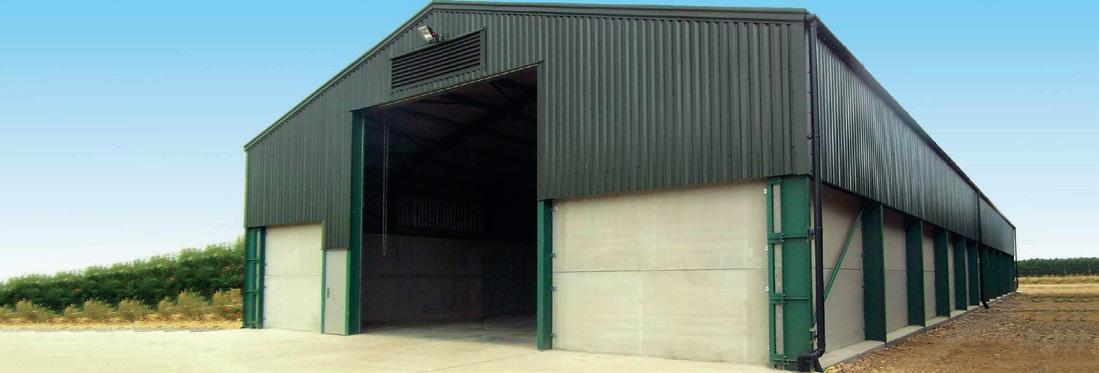
• Prime minister in key pledge
• Annual assessment 'is critical'
• Food summit held every year
Grants worth £427m will be opened to farmers this year –following an announcement by Prime Minister Rishi Sunak at last month's NFU conference.
The package will include £220m for technology and productivity schemes, said Mr Sunak – ensuring the government delivered on its commitment to maintain the farming budget for England at £2.4 billion per year for the duration of this parliament.
The schemes would ensure farmers could access new equipment, including kit which increases automation to reduce reliance on overseas workers. It would also fund cost-saving energy measures, such as rooftop solar, to safeguard land for food production.
The multi-million-pound funding pot will also increase support for processing, packing and retailing on
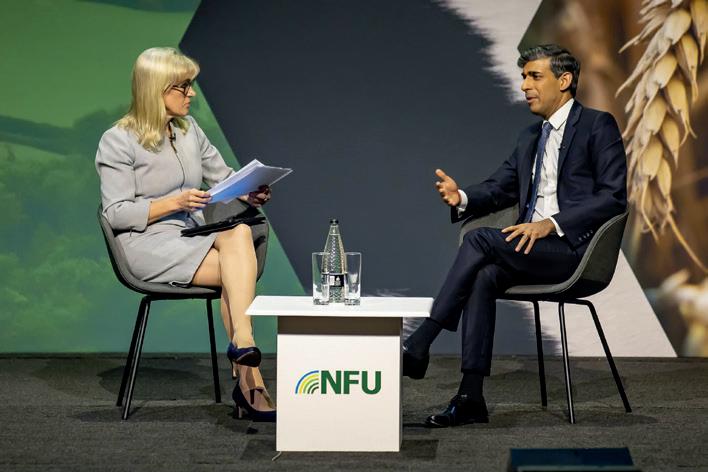
farms. It doubles investment in productivity schemes, growing the grant offer from £91m to keep up with demand from farmers.
Almost half of farmers in England were now receiving government support through new schemes created post-Brexit, said Mr Sunak. “We’ll never take our food security for granted. We’ve got a plan to support British farming – and we’re going further again today.”
The Prime Minister also confirmed plans to reduce red tape around permitted development rights – encouraging farmers to develop buildings and diversify earnings through farm shops, commercial space and sporting venues.
It is expected to benefit the broader rural community by increasing job
'Cynical' giveaway won’t win back farmers – Lib Dems
Responding to the Rishi Sunak's £220m funding package, Liberal Democrat leader Ed Davey accused the prime minister of selling farmers short.
“Conservative prime ministers have spent years taking farmers for granted,” he said. “From the botched rollout of farm payments to trade deals undercutting our farmers, this government has let down rural communities at every turn.”
Rural communities had been ignored by Mr Sunak, said Mr Davey. “His government just doesn’t care and doesn’t get it, this cynical pre-election giveaway doesn't do anything
to change that.”
“We’ll never take food security for granted
opportunities and commercial units available, helping local residents to develop small and medium enterprises in rural communities, and connecting communities more with their local farms.
Mr Sunak also announced a new annual Food Security Index to monitor levels of UK food security. He pledged to hold an annual Farm to Fork Summit – similar to the Downing Street event last year – and unveiled a £15m fund to help reduce food waste from the farm gate.
It follows a sustained NFU campaign on food security. Former NFU president Minette Batters said: “I think it’s significant. When we left the EU we were told the Agriculture Bill would be five-yearly reporting. It was a real battle to get it to every three years.”
She added: “The good thing about annual reporting focusing on the UK is it means we will be measuring more often, allowing us to monitor the situation, and can see if we have a problem and do something about it.”
The Lib Dems claim that Defra's own figures show a £227m shortfall in government spending on agriculture. And they say the government’s seasonal worker scheme has allowed farmers to recruit just 45,000 employees from overseas, when the NFU says 70,000 workers are needed.
The Lib Dems also say the government voted against measures for an impact assessment on the effect the Australia and New Zealand trade deals would have on farmers – despite arguments that there had been insufficient parliamentary oversight.
With a general election expected this year, Ms Batters said she hoped all political parties would commit to hosting an annual domestic food security summit. The issue was vital to the wider general public – not just the farming sector, she suggested.
“Annual assessments will be critical to all of this. Commitment to core standards will also be key. We have to implement core standards that will mean our negotiators will have a clear mandate on which to negotiate these trade deals. That has to happen.”
February was a drier month and we were able to complete a couple of small drainage jobs. Looking at the sky you would think it was summer! We were just lucky.
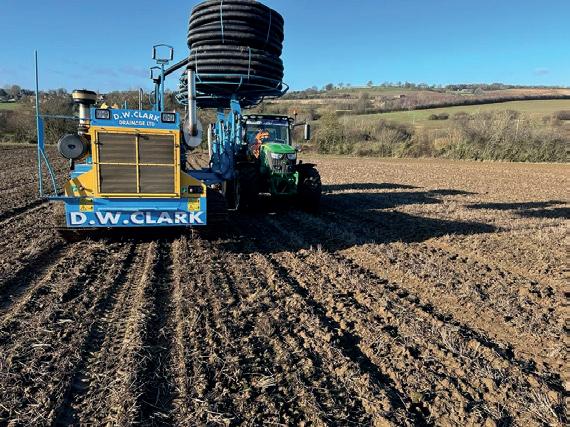


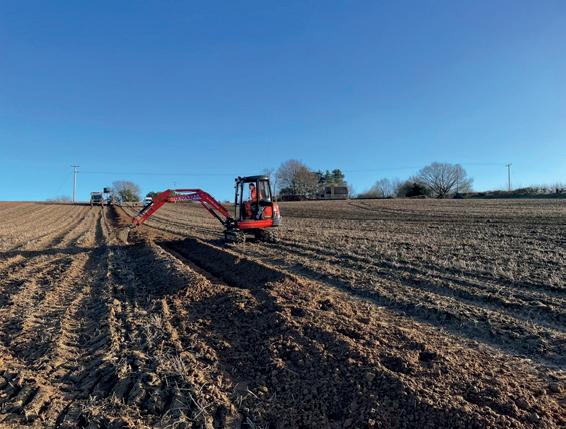
This client also had a problem with a ditch and unruly willow trees that were blocking the brook on one of his boundaries.
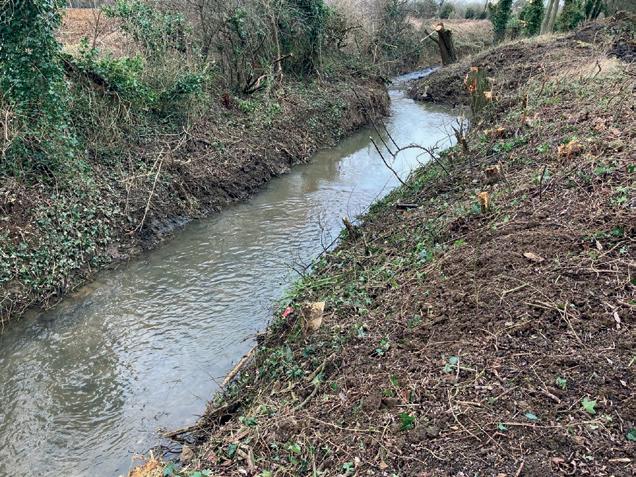

March
6-7 Low Carbon Agriculture 2024, Stoneleigh, Warwickshire www.
lowcarbonagricultureshow.co.uk
12 Andersons Prospects for Agriculture 2024, Newmarket www.theandersonscentre.co.uk
14 Andersons Prospects for Agriculture 2024, Newark www.theandersonscentre.co.uk
April
27-28 East Anglian Game & Country Fair
May
11 Nottinghamshire County Show, Newark
15-16 Pig & Poultry Fair
25 Shropshire County Show, Shrewsbury
29-30 Staffordshire County Show, Stafford
To list your event for free, please email editor@ruralcity.co.uk
Anew net zero glasshouse research and development facility is set for the University of Lincoln’s Riseholme campus.
The Greater Lincolnshire Local Enterprise Partnership is providing a grant of £1,333,000 for the project, and the University of Lincoln is providing a further £888,666 – bringing the total project cost to just over £2m.
Knowledge transfer
The purpose-built glasshouse will offer specialist research infrastructure and innovation support services. This will allow SMEs and other businesses in the agricultural sector to adapt or improve their products or services.
The glasshouse will be sub-divided into independently controlled compartments, facilitating the delivery of multiple projects at the same time throughout the year.
It will provide a space for collaborative research and innovation. Eligible

businesses will have access to research and knowledge transfer opportunities from university experts who will support businesses to adopt new technology and develop new products..
Sarah Louise Fairburn, chair of the Greater Lincolnshire LEP Food Board, said: “This project will support those innovative businesses in Greater Lincolnshire that are working on agricultural and horticultural technology.
“The university’s Agri-Tech Incubator will establish a pipeline of businesses who require access to R&D facilities within a professional glasshouse environment, supporting future growth of the agri-tech cluster and ambitions of our UK Food Valley.”
University deputy vice chancellor Andrew Hunter said: “This investment demonstrates the University’s long-term commitment to world-leading research.”

The £2m glasshouse will be used to support new agri-tech businesses




Ayoung farmer is undertaking a challenging feat of endurance to highlight mental health issues in agriculture.
Tom York, a volunteer with the Farming Community Network (FCN) and a student at Harper Adams University, will compete in a gruelling Ultimate Triathlon – comprising a 2.4-mile swim, 122-mile bike ride, and 26.2-mile run.
Help available
Having worked on farms and in the wider agricultural industry alongside his studies, Tom says he can understand how the highs and lows can take their toll on wellbeing. And he says: “You can push through.”
Tom talks about his own mental health challenges – how the FCN charity can provide help and how his friendship group was devastated to lose a fellow student to suicide.
“If I’d realised how much help was available, I would have reached out much sooner, and now I want to encourage others to talk. I don’t want to dwell on the darkness, but the light that emerges from it.”
Tom believes the demanding nature of the triathlon mirrors the difficulties of coping with a period of poor mental health, and will use it to bring hope by demonstrating that with support and persistence, many challenges can be overcome.
FCN is working to improve the health and wellbeing of people in farming and provide support at times of difficulty and change. Tom is one of more than 300 FCN volunteers from across the agricultural sector. Currently in his placement year at Wilson Wraight agricultural management consultants in Suffolk, he

Tom York is raising money for the Farming Community Network
says he is encouraged by the support shown to him by his employer.
Wilson Wraight business manager Susan Doogan said: “The fact that our very own Iron Man, Tom, is taking on this gruelling challenge to further raise awareness and funds for FCN is fantastic.”
To make a donation, please search for ‘Tom York Ultimate Triathlon’ at www.justgiving.com

















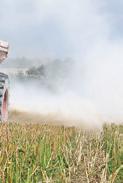
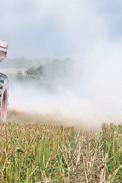























































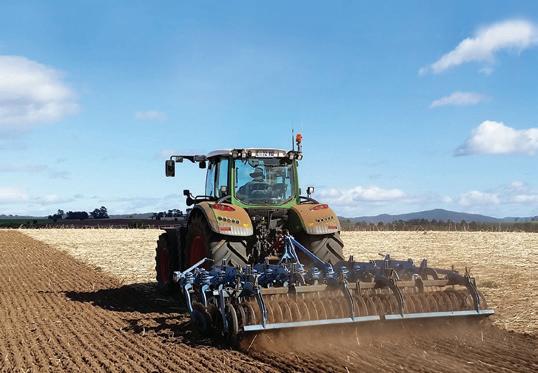









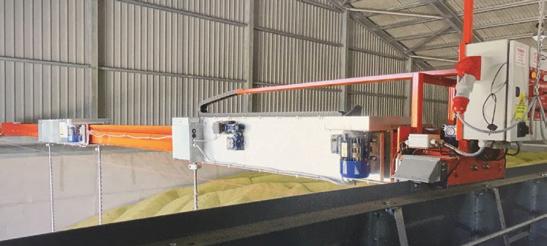






















Large amounts of land are being taken out of food production and put into the government's flagship agri-environment scheme, the Sustainable Farming Incentive, say agronomists.
Contractors and farmers could struggle to survive where large areas of arable land are being put into the scheme, which is being seen by some growers as less risky than producing food crops.
The Association of Independent Crop Consultants issued the warning after being briefed by Defra representatives at their annual technical conference earlier this year. It came as the government unveiled its 2024 scheme offer.
An interactive poll at the conference found that the vast majority of AICC members are actively involved in SFI applications – either taking control of the process or advising clients on the most suitable actions for their farms.
Impartial advice provided by AICC members is seen as particularly im-
portant in the implementation of integrated pest management (IPM) options within the SFI, along with soil and nutrient management plans.
Attendees at the conference reported significant areas of arable land being taken out of food production and put into non-food producing SFI options, with Defra increasing the payment rates increased for farmers opting into the scheme this year.
Whilst there is an acceptance farmers need to be incentivised to produce food more sustainably, there is a fear it could have devastating consequences for associated agri-businesses, including agronomy services.
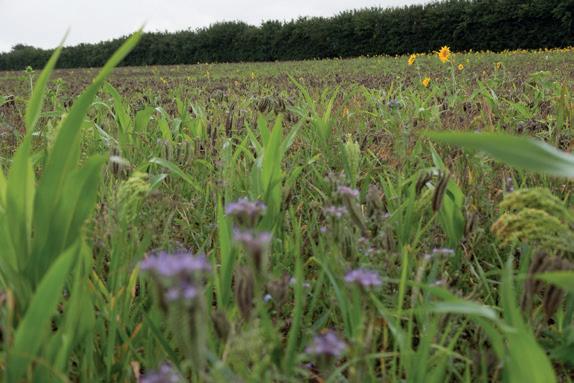
AICC chairman Andrew Blazey said agronomists were having to adapt to rapid changes playing out in UK agriculture. “This is in addition to risk management and ensuring the crop production side of the business performs to its full potential.”


TBuckinghamshire based agronomist Andrew Cotton said contractors and farmers reliant on contracting their neighbours' farms could struggle to survive, especially where large areas of arable land were being put into SFI, which is increasingly common.
Land is being put into environmental schemes rather than farmed Agronomists are adapting rapidly to new policies, says Andrew Blazey (below)
grain trailer manufacturer, who has seen sales plummet.”
Defra’s Fiona James said the government would act promptly to address any critical issues. The government was keeping a watching brief for any unintended consequences arising from the SFI – whether they were environmental or economic.







Once these businesses are lost, it would be very difficult for them to re-enter the industry due to the ever-increasing cost of new machinery, he said. “It has already had a significant impact on a local










Defra had indentified similar concerns, acknowledged Ms James. “It’s how we build up over time from anecdotal evidence to hard facts that [will] enable us to have the evidence base... to course correct, to iterate our measures over time.”








SFI payment rates for 2024 are 10% higher than previously with farmers able to choose from 50 new actions. Stacking these options as part of a three-year SFI agreement is encouraged and Defra hopes 70% of farms will be in the scheme by 2028.


he Rothamsted Reseach centre says it remains fully focused on its scientific programmes amid what it acknowledges is a challenging financial situation.
It follows a report by The Guardian that the research facility has warned staff they will have to pause “non-essential” work –announcing a hiring pause and warning of pay freezes due to what the newspaper described as a funding crisis.
In a statement, Rothamsted said: “We are fully focused on our scientific pro-
gramme, generating impactful outcomes from our many research commitments, and remain very much 'open for business' for all our partners and collaborators.
“Our science is in a great place, having been exhaustively peer reviewed for the next five years of BBSRC funding. As an institute we are addressing fundamental issues of food security and valuing environmental services for a sustainable net zero future at national
and global scales.
“As the longest serving and most renowned UK agricultural research facility we feel privileged to be part of such vital work. We are an independent institute supported to deliver our strategic science programmes by the BBSRC. We acknowledge the financial situation as challenging, as it is for many similar institutes and universities, and are working hard to implement necessary change as would be expected from any effective management team.”
Maize could be a good choice for many growers this spring – stacking up well against more conventional crops with additional benefits from the Sustainable Farming Incentive.
“Significant reductions in nitrogen use, low-input agronomy and soil improvement opportunities are just some of the appeal and managed properly maize can bring a welcome diversity to arable rotations,” says KWS technical maize specialist Andrew Cook.
“If you’re located close to a dairy farm, beef producer or anaerobic digestion plant, there could be a local market for forage maize, but there is growing interest in growing maize as a grain crop too.
“If you are growing maize for grain it is important to load things in your favour to ensure you have a crop that is going to get to harvest and that means looking at the best site, the right crop establishment method and the most appropriate varieties.”
Whether you are growing maize for
forage or grain, the first objective is to choose the best site as this plays a key role in determining maize yield and quality.
“The easiest way to increase yield is to avoid sowing maize on non-performing fields. It’s a crop that favours sheltered locations with a south-facing aspect, which will permit earlier drilling and maintain soil temperature for longer in early spring.”
Sheltered fields also offer higher retention of heat units and radiation into the canopy, benefiting total yield potential. The recommended maximum altitude for maize is 1,000 feet (300 metres) above sea level, says Mr Cook.
“Maize favours sandy/sandy loam soils, a well aerated soil structure and no compaction. Clay soils hold water and are slow to warm up in spring although maize can be grown on soils with a clay content of up to 25% if earlier drilling is used.
“Chalk is unsuitable, as it is slow to warm up in spring and can reflect sunlight. But chalk downland soils
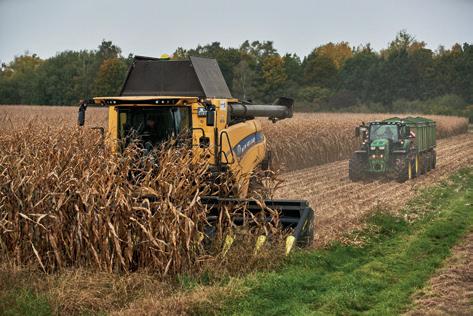
Maize can bring diversity to arable rotation
Below: KWS Anatasio has excellent standing power
can support maize if soil depth is sufficient. Poorly aerated soils will limit root formation and can cause premature crop senescence.”
Variety selection largely revolves around heat units available, says Mr Cook. “KWS Anastasio is a great choice for grain maize due to its high grain yield and excellent standing power. If you’re in an area with a higher number of heat units available then KWS Papageno would be a
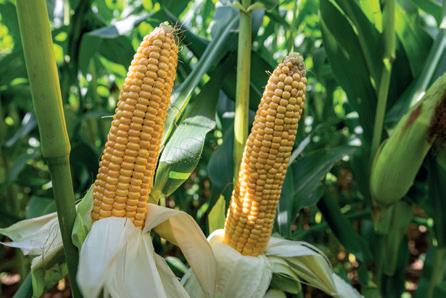
“While KWS Exelon would be a good option for slightly more marginal areas, ultra-early varieties with maturity ratings of FAO 150 to 160 are not recommended for grain due to the risk of brackling, where plants break below the cob as they mature.”
Equipment - Livestock - Feed - Fertiliser - Seed - Cash Flow
Diversification Projects - Building - Debt Consolidation
Equipment - Livestock - Feed - Fertiliser - Seed - Cash Flow
Equipment - Livestock - Feed - Fertiliser - Seed - Cash Flow
Diversification Projects - Building - Debt Consolidation
Diversification Projects - Building - Debt Consolidation

•
• Excellent rates
• 6-month to
• Tax efficient
• Simple, quick phone application
•
•
• High street banks unsupportive
• Tenant farmers welcome
We bring the personal touch back into farm finance. For the personal touch, ring George Bridgman on 07522 731193 george.bridgman@abfltd.co.uk







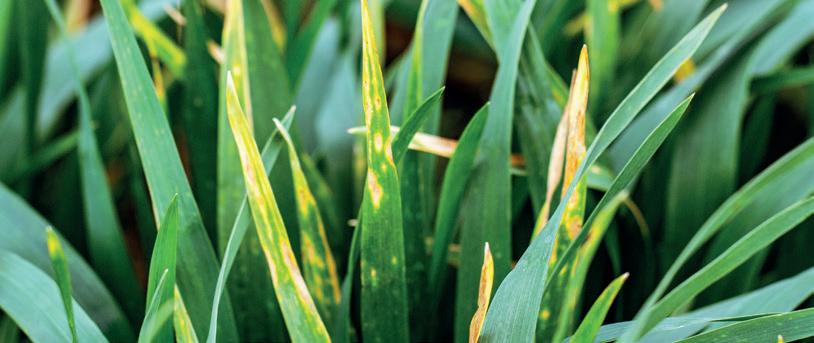
After one of the wettest winters on record, early drilled cereals are already showing significant disease pressure and will need a carefully considered programme of fungicides to ensure they go on to achieve their true yield and quality potential.
The critical factor in providing adequate protection from cereal diseases is to ensure that a suitable fungicide programme starts as early as possible, preferably before infections take hold.
With several fungicides showing signs of reduced efficacy due to disease, it is important to limit the exposure of at-risk active ingredients. This can be achieved by using a range of fungicides throughout the season, and by using different active ingredients with alternative modes of action.
ARIZONA® (folpet 500 g/L) is a unique multi-site fungicide that provides valuable protection against key diseases in wheat and barley: it delivers a reliable return on investment through enhanced disease control and safeguards the efficacy of partner products as part of an anti-resistance strategy.
ARIZONA® delivers the following benefits:
• Additional control of septoria in wheat, and ramularia, net blotch and rhynchosporium in barley. Also reduces yellow and brown rusts and gives activity against mildew.
• Extends green leaf area duration and boosts yields: every £1 spent on ARIZONA® will provide a £4 return on investment.
• The only fungicide proven to extend the effective lifetime of at-risk fungicides.
‘Every £1 spent on ARIZONA® will provide a £4 return on investment’
(Based on 224 trials carried out from 2019 to 2023. Based on wheat at £200/tonne)
T1 is the priority timing for the control of septoria in wheat: using ARIZONA® at this timing will provide a positive yield response and reliable return on investment. A second application at T2 will further enhance disease control and protect partner chemistries.
In higher risk situations (e.g. a susceptible variety facing high disease pressure), ARIZONA® should also be included at T0 to provide early season protection before diseases take hold.
• 1.0 - 1.5L prod/ha at T1 & T2
High risk => 3 x 1.0L prod/ha (T0, T1, T2) or 2 x 1.5L prod/ha (T1, T2). Consider including ARIZONA® at the first fungicide application in any crop.
Max. 3.0L product/crop
In barley, ARIZONA® should be included at T2, especially where ramularia control is required. ARIZONA® can also be used at T1 when it protects against rhynchosporium, or at T0 if earlier protection is required. To achieve the best control of both diseases, ARIZONA should be included at T1 and T2.
• Ramularia: T2 1.0 - 1.5L/ha
• Best guidelines for ramularia and other diseases: T1 1.0 - 1.5L/ha fb T2 1.0 - 1.5L/ha
Max. 3.0L product/crop
ARIZONA® is formulated using ADAMA’s MSI Protech technology.
ARIZONA POWERED BY MSI Protech
MSI stands for the special action as a Multi-Site Inhibitor.
Protech stands for Proven Technology.
MSI Protech® is the ONLY multi-site cereal fungicide proven to prolong the effective life of single-site partner products. It’s super fine grind of active ingredients means the formulation is fully optimised for the best results.
For more information, subscribe to the ADAMA crop protection hub at: www.adama.com/uk/en/adama-hub

ARIZONA® is a registered trademark of the ADAMA group. ARIZONA® contains 500g/L (39.5% w/w) folpet. Use plant protection products safely.
Always read the label and product information before use. For further product information, including warning phrases and symbols, refer to www.adama.com/uk or call The Technical Helpline on 01635 876 622.
ADAMA Agricultural Solutions UK Ltd. Third Floor East, 1410 Arlington Business Park, Theale, Reading RG7 4SA. Telephone 01635 860 555. UKenquiries@adama.com.

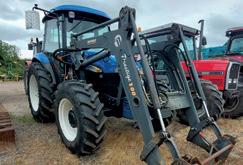

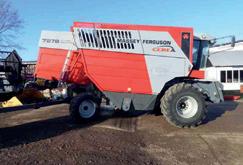




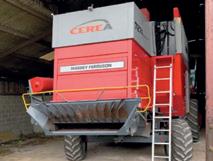


Oak House, Harby Lane, Colston Bassett, Notts, NG12 3FL
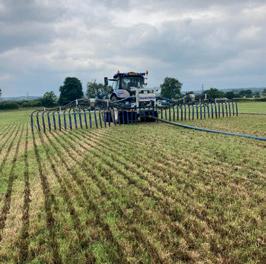
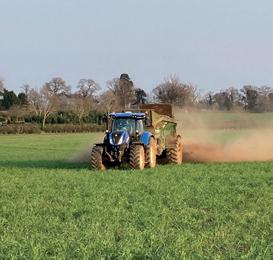


Tractors & Telehandlers
• MF 240 - p/steering
• MF 6480 - Dyna 4, v tidy
• MF 3060 - 4 autotronic, v tidy
• MF 6120 - v tidy, Dyna shift, 4,700hrs
• New Holland TD80 & loader, 5,900hrs
• Caterpillar 407 ag telehandler (2009) - tidy
• Various forks & grapples
Harvesting
• MF 7278 AL combine (2006)24ʼ PF, v tidy
• MF 7274 combine (2004) - 22ʼ table, 208hrs
• MF 30 - 14ʼ FF - v tidy
• MF 40 RS - 20ʼ PF - v tidy
• Vicon RV2160 Round Baler, v tidy
• Krone 1290 HDP Baler, tidy
• New Holland 980 Big Bale
• Claas Liner 3100 twin rotor rake 10m
• Kv Taarup 4232 3.2 trailed mower
• New Holland 377 Baler



Other Equipment
• Dowdeswell DP7F, 7f, v tidy
• KV LD85 5f & 4f
• Flat Lift Force - 2 leg HD buster
• Knight Raven, 3 leg combination, vgo
• Vicon PO-EDW weightcell, vgo
• Vicon RO-EDW extension hopper
• Kuhn Axis 30.1 spreader extension hopper
• Cousins 6.2m hyd rolls
• Richard Western 12t dump trailer
• Armstrong & Holmes 14.5t trailer, v tidy
• Bomford 9ʼ topper
• Major 1,600g vacuum tanker
• 80” mounted rotovator
• 450 & 600 workshop heaters
• A full range of Nugent trailers
Excavators
• Yanmar 8t & 3 buckets
• Case CX5, 5t & 3 buckets


•
•
•
•



Afocus on key nutrients could help to pull lethargic crops out of the cold, wet winter.
Without a strong root system to scavenge for nutrients and reach water as summer droughts take hold, no amount of fertilisers or other inputs will deliver vital growth and yield potential, says ICL agronomist Scott Garnett.
“With extensive trials showing a 35-40% increase in root mass resulting from use of the prolonged release multi-nutrient fertiliser Polysulphate, it's undoubtedly an approach practically all crops currently sitting in the ground could benefit from.
“Although many soils are still wet and cold, this will change as we approach the summer months. A shortage of water is very likely and without a well-developed root system, plants will be under a lot of stress with lower yields and quality resulting.”
Polysulphate's mix of 48% sulphur, 14% potassium, 17% calcium and 6% magnesium means it provides the building blocks for rapid root growth as well as addressing sulphur requirements, says Mr Garnett.
“The high sulphur content of Polysulphate is important in boosting nitrogen use efficiency (NUE) and improving the quality of crops – but the potassium, calcium and magnesium also play a key role.
“If you want to develop a good root system you need calcium, magnesium, phosphate and some trace elements and these are the main components driving mitosis and the cell growth required to build a good, strong and healthy root system.
“Phosphate is usually fairly abundant in the soil, but adding calcium and magnesium can really kickstart root growth and this holds true across a range of crops including wheat, barley, oilseed rape and maize.
Mr Garnett says phosphate uptake by

plants correlates with root health – and ICL has consistently seen this rise by up to 40% after Polysulphate application.
“It's also very visible in the physical root mass with markedly bulkier roots with more branching and much greater ability to utilise available water and nutrients. One more centimetre of root growth per plant touches an extra 130 tonnes of soil/ha.”
Polysulphate can be applied from February through to April at a recommended rate of 100 - 150kg/ha of product. As well as improved NUE and better roots, the low carbon mineral has been shown to deliver significant other benefits, Scott Garnett explains.
“It's a naturally occurring multi-nutrient sulphate fertiliser mined from under the North Sea and processed into an easy-to-apply product with excellent physical properties and performance right up to the wid-
wheat and as much as 33% in oilseed rape with a clear 0.5t/ha advantage over the commonly used NS products, says Mr Garnett
“Compared to NS products, it also gives growers the opportunity to separate sulphur out from their nitrogen applications. In NS products, both nitrogen and sulphur are locked together in a fixed ratio and this can be a problem.
“If you want to meet the crop's sulphur requirements using NS products, for example, you're often also applying a sizeable amount of nitrogen which may not be desirable, especially in the current very wet soil conditions, when leaching can be an issue.
“Applying Polysulphate means you can apply the sulphur you need with the precise amount of nitrogen required, which is better for both the environment and overall production efficiency.”
“Polysulphate can be applied by itself or blended with nitrogen fertiliser to provide the precise N:S ratio for an individual growing situation and to help farmers achieve 'little and often' applications.”
Trials by Nottingham University researchers have shown over 50% of the sulphur contained in Polysulphate is available in the first 12 days after application with the remainPolysulphate delivers extra3040%root growth(below right) says Scott Garnett


•
•
•
•
•
•
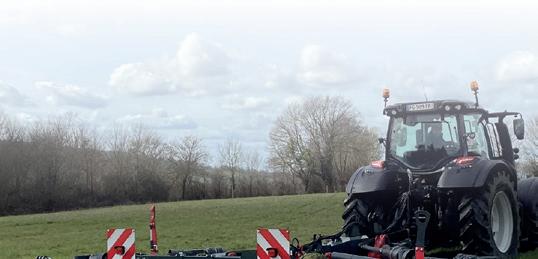
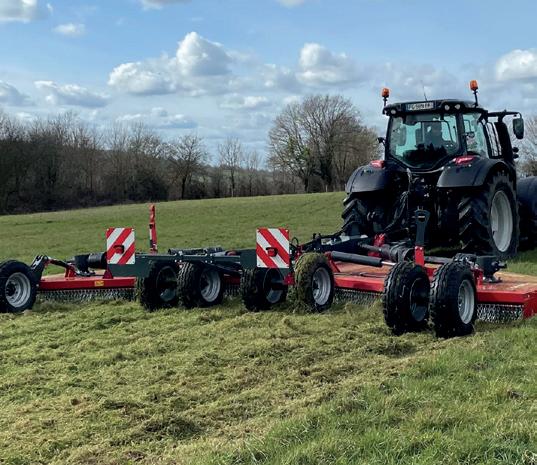


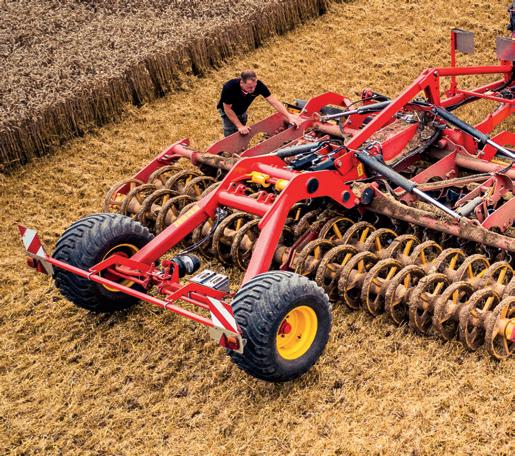
CarrierXThastheabilitytooptimise thediscanglestoitsworkingdepth. Thiscreatesafullcut-outata shallowerworkingdepthorreduced soilflowatadeeperworkingdepth. Bothofthesefactorscontributetoa lowerdieselconsumption.
Learnmoreatvaderstad.com
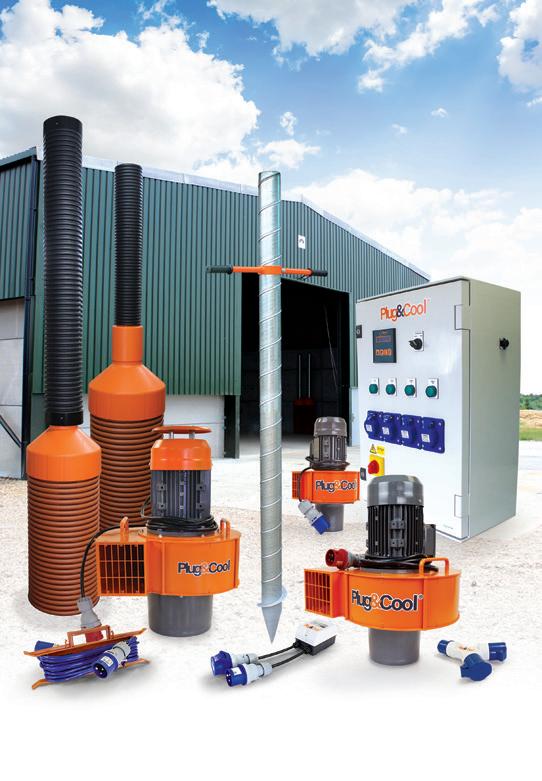

CarrierXTcaneitherbedelivered asatrailedormountedversion. Theworkingwidthis4.25,5.25or 6.25m.AllCarrierXTmodelscan beequippedwitharangeofboth singleanddoublepackeroptions.






Companion crops in direct drilled oilseed rape could help reduce damage by cabbage stem flea beetle, say scientists.
Results from a Rothamsted Research study suggest relatively simple changes in crop management could help control a ubiquitous pest which has seen many farmers abandoning oilseed rape altogether.
Field trials, conducted as part of the EU-funded EcoStack project over four seasons at Harpenden, assessed crop damage caused by adult flea beetle feeding and larval infestation when sown with different companion plants.
Companion plants included both clovers and cereals to simulate delayed application of herbicide to kill volunteers. Application of straw mulch was also tested to simulate drilling into stubble trash.
Flea beetle infestations have rocketed since neonicotinoid seed treatments to combat the pest were banned in 2013. Implemented because of environmental concerns, the ban triggered a 50% slump in the amount of UK oilseed rape.
Researcher Sam Cook, who led the study, said: “Plant diversification –especially sowing crops with the addition of companion plants – has been shown to improve insect pest control in many cropping systems.”
The need to find similar effects for oilseed rape is acute, added Dr Cook. “We wanted to see if control methods that are aligned with regenerative agronomic practises could help provide some protection.”
Adult flea beetle damages oilseed rape by feeding on cotyledons and young leaves early in the autumn. This can threaten crop establishment. The larval stages also feed in the stem causing reduced yield.
The team found significant differences in the level of feeding damage between treatments in all experiments. Rape with cereal companion plants or with straw mulch showed the strongest reduction in adult feeding damage.
A protective effect of clover was also observed in one trial. Differences in larval infestation were also observed between treatments but were not consistent and might be more related to oilseed rape biomass than to treatments.
“This study shows that compan ion planting can protect rape crops from both adult flea beetle damage and larval infestation,” said Gaëtan Seimandi-Corda who managed the ex periments.
“These results suggest that farmers could relatively easily adopt new con trol techniques, but there is a need for more research to define the best agro nomical practices.”
Cereals such as oats could be sown as companion plants which are later removed, suggests the study. Alterna tively, cereal volunteers could be left for longer before removal to provide protection from flea beetle.
That said, the timing of volunteer removal and the sowing date of com panions is essential for efficacy – and to avoid competition between the oil seed rape and the companion crop, Mr Seimandi-Corda added.
“We are now learning that in creased plant diversity can promote an increased diversity of beneficial in sects within the field. That can help farmers to farm more sustainably and mitigate some of the negative ef fects of food production on the envi ronment.”
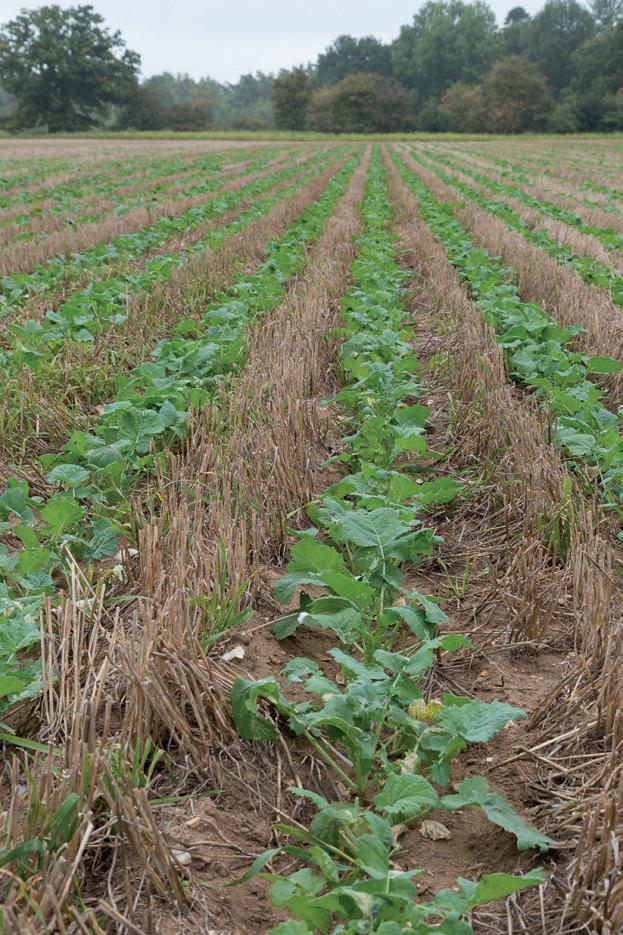
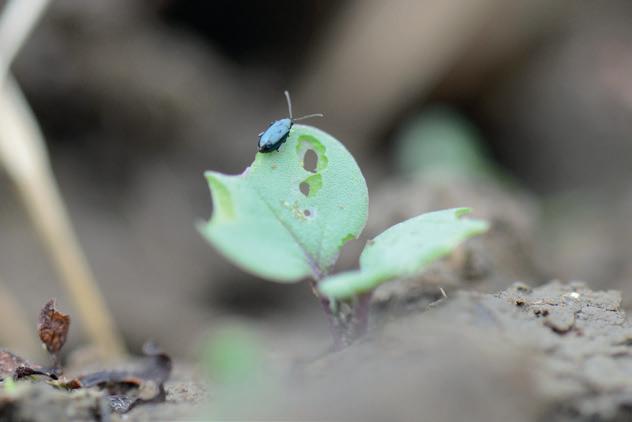
Pre-emergence residual herbicide Emerger – which targets a range of common broadleaved weeds – can now be used in field beans and combining peas.
The news will likely be welcomed by growers given the low number of pre-emergece herbicides authorised for use in these crops, says Richard Phillips, Bayer campaign manager for roots and horticulture crops.
Broad spectrum
“As the only aclonifen product on the market, [it] means growers have access to a herbicide with a broad spectrum of activity. Its novel mode of action – HRAC group 32 – will also support efforts to promote resistance management.”
Among broad-leaved weeds, Emerger offers good activity on fat-hen, redshank, black bindweed, mayweeds, charlock, chickweed and poppy – as well as moderate control of blackgrass
from seed. It is not authorised for vining peas.
“Emerger is primarily absorbed by the shoot of germinating weeds, this is advantageous in dry weather conditions such as those that typically occur in the spring when seeking to establish spring crops,” says Mr Phillips.
To promote all-round weed control and protect efficacy, Bayer will support Emerger in mixes with one other herbicide so long as growers and spray contractors observe minimum application rates.
“It is prudent to ensure Emerger is partnered with a product belonging to another mode of action group to support effective control and protect efficacy, says Mr Phillips.
“Depending on the crop and the weed spectrum to be managed, we have identified those products and inclusion rates that give growers the greatest means possible of achieving the control they desire.”


Mammoth Millet –the Spring crop in demand.
Many growers have a lot more Spring acreage than planned due to the loss of winter crops, or not being able to get them in over the recent wet months. Spring seed is in short supply, and very expensive as a result.
Mammoth Millet can be sown after failed rape or cereal crops, is excellent at suppressing blackgrass, and has a very competitive gross margin.
Mammoth Millet is a very productive, crop normally sown in early May and harvested 135 days later in mid-September.
Gross margins over £1,000 per Ha.

Mammoth is a cheap, simple and easy crop to grow and we are seeking new growers for 2024.
Longways House, Burnetts Lane, West End, Southampton, Hampshire SO30 2HH
T: 02380 696922 email: enquiries@soya-uk.com
www.soya-uk.com
SoyaUK





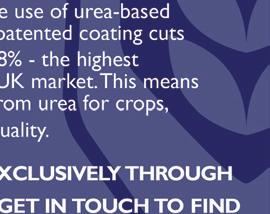




• Better for soil health and development
• Nutrients held longer around rootzone
• Benefits profitability and farm margins
Soil with minimal cultivation holds more nutrients and wa ter than fields which have been ploughed – benefiting crops and ul timately farm profitabilty, suggests a study.
The study conducted by research ers at University of Leeds Farm com pares soil health, crop production, greenhouse gas emissions, and profit of different farming systems across seven 12m x 40m plots.
Some plots were ploughed and pow er harrowed. Others underwent mini mal cultivation using non-inversion, shallow cultivation. Cover crops, liv ing mulches, manures, livestock inte gration and herbal leys were also as sessed.
Data was collected by state-of-theart soil stations created by Estonian agtech company Paul-Tech, which take real-time readings of nutrient avail ability, soil water levels and soil tem perature at depths of 8cm and 20cm.
Designed to shed light on the eco nomics of regenerative farming methods, each plot received three treatments of nitrogen throughout the trial. Nutrient and water availability was measured at both depths after each application.
Crop benefits
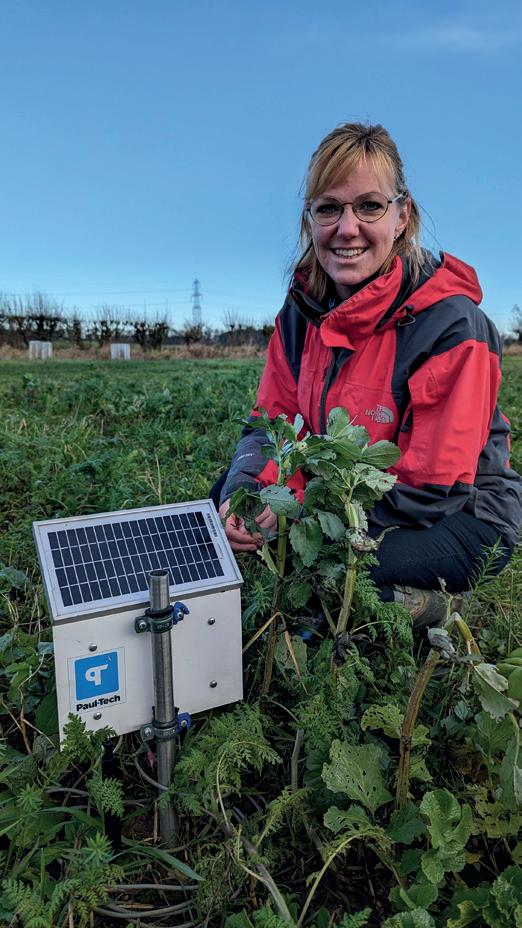
significantly smaller nutrient release at fertilisation and considerably less nutrients available to the plants at 8cm.
Project leader Ruth Wade said: “Results coming from this regenerative agriculture plot trial will provide important data on the impacts of different farming systems both on the environment but also for the farm business.”
The minimal cultivated plots recorded a significantly larger nutrient release after fertilisation and higher nutrient availability at a depth of 8cm
Soil temperature was also impacted by the cultivation method with the ploughed soil experiencing much larger temperature changes over the course of the trial.
The ploughed soil froze when air temperatures dipped below zero, whereas those sown under a minimal cultivation system maintained a much more stable temperature throughout and did not freeze.
'Fascinating results'
The study is ongoing and will look at the impacts of other regenerative tech-
“Min-till plots
had better nutrient release
niques on soil health over a longer period. Paul-Tech chief executive Mikk Plakk, described the study findings as fascinating.
Mr Plakk said: “The data from our soil stations clearly shows soil nutrient availability and temperature differences between plots with different cultivation methods.
“For example, the soil in the conventional ploughed plot froze at root level and showed significant temperature differences while the minimal cultivated plots didn’t freeze and temperatures were relatively consistent in the root zone.
“Also, in the minimal cultivated plots, the soil was much more effective at holding water, which meant far more nutrients were available at 8cm than was the case in the ploughed plots.
“The findings have a significant bearing on how farmers should be treating soil. They strongly suggest cultivation methods have the potential to significantly improve soil and plant health while reducing the amount of inputs they need to apply.”
Paul-Tech’s soil station combines real-time proprietary sensor data with weather and satellite data to produce agronomic recommendations for farmers and growers, which are reported via an online dashboard.
Already in place on commercial farms in Scandinavia and eastern Europe, the system was launched in the UK in January. It means more informed decisions about crop inputs and irrigation, leading to better soil health, plant health, yield and cost savings.
“Getting access to real-time, high frequency data from the soil station was vital for this study and will be equally valuable for farmers,” said Mr Plakk.
He added: “This level of insight would not be available without the ability to measure water and nutrient movement throughout the soil, which our system has been specifically designed to do.”
• Roots comprised by lack of oxygen
• Building early nutrition may be crucial
Growers are advised to assess soil conditions before deciding whether waterlogged crops are still viable – or fields should be left to recover for next season.
Tough questions may need to be asked when it comes to choosing between managing struggling crops already in the ground, redrilling fields altogether or putting in a cover crop to improve soil structure, say agronomists.
Exceptionally wet autumn and winter weather continues to pose serious difficulties, says Neil Watson, technical manager for Hutchinsons. While some early-sown winter crops are looking good, others have been hit hard, he says.
Crucially, when soils become waterlogged, this starves roots of oxygen, says Mr Watson. This causes them to stop functioning, preventing the movement of water or nutrients from the roots up to the top growth.
duction might be around 1,200/m2, producing 500-600 ears/m2, but in extremely wet conditions, particularly when waterlogging occurs close to emergence, tillering may be nearer half that.”
In severe situations, crops can also “cannibalise” nutrients from older leaves to support newer growth, causing early leaf senescence, says Mr Watson.
Roots often adapt to wet conditions by growing closer to the surface to facilitate gas exchange in anaerobic soils. Shallow rooting presents issues as the season progresses though, especially when conditions turn dry and crops need more scavenging ability for water and nutrients, he says.
“Without the foundations, you haven’t got the critical structure to build growth throughout the season.”
The first step is to assess the soil and crop condition in individual fields, identifying issues and crop requirements. Building early nutrition to boost root development and build biomass is crucial, and early nitrogen is one of the most important considerations.

“The first N-Min results for this year show there is less residual nitrogen in the soil than we’d normally see, primarily as a consequence of nitrate leaching, says Hutchinsons fertiliser manager Tim Kerr.
But it’s a quadruple whammy; there’s less nitrogen in the soil, less in the crop, poorer rooting, and reduced mineralisation due to the impact of waterlogging on soil microbes. We’re facing a very different scenario to previous years.”
Applying nitrogen in ammonium nitrate form is generally preferred as this is more readily available to plants than urea-based fertiliser, which must go through two chemical changes –


Alters physical soil properties - e.g. reduced soil porosity and gas diffusion, leading to soil oxygen deficiency, limiting root growth and function
Consolidation of soil structure, making it harder for roots to penetrate and access nutrients
Impacts gas transfer from soil to roots
Compromises nutrient uptake

Denitrification (in saturated, anaerobic soils)reduces nitrate to nitrite which is toxic to plants and releases gases
Nutrient leaching, especially on lighter soils (particularly nitrogen, sulphur and boron)
Anaerobic conditions inhibit activity of soil microbes involved in many processes, including organic matter decomposition, mineralisation, N fixation
Shallower rooting = lodging risk and reduced nutrient uptake
Delayed or reduced tiller production
Anaerobic conditions cause mineralisation of organic sulphur to sulphides rather than sulphate
both reliant on microbial activityfor it to become plant-available.
“In normal conditions, plants are slower to respond to urea fertiliser, but if soils are in a less than ideal state, that process could be even slower. Inhibited urea is even slower to work, so be careful what you use.”
You haven’t got the critical structure
Early sulphur will also be important on almost every soil this year, as sulphate, like nitrate, is easily leached, Mr Kerr says. “Ideally, apply sulphur with the first nitrogen, or alongside the potash. Rates should generally be in proportion to the amount of nitrogen applied.”
Boron is another easily leachable nutrient, and testing of samples in recent years shows over 70% to be low in boron, especially on lighter land.
“Deficiency symptoms are rarely seen, but boron plays a vital role in root and shoot development. Trials in 2020 showed a positive response from foli-




ar boron applied at GS 30 and GS 39.”
Potassium and magnesium are other nutrients to consider. They can be easily lost from lighter soils with a low cation exchange capacity, while phosphate availability may also be lower this year, not because of leaching, but due to losses from soil runoff in heavy rain.
“In cold, wet soils, the microbes that convert exchangeable P to available P slow down, so crops can quickly exhaust the soil solution, resulting in deficiency symptoms, even where soil indices are high,” adds Mr Kerr.
“Foliar products are an option if there is sufficient leaf area, however phosphites may be a more effective option to develop rooting and improve future scavenging ability.”
Timely application of plant growth regulators could play an important role in manipulating crops to offset some of the damage done by waterlogging or flooding, says Alice Cannon, regional technical support manager for Hutchinsons.
“The power of PGRs is not just

about straw shortening; the chemistry can manipulate crops in many other ways, depending on the product choice, rates and timing.”
Tramline and small plot trials last year, for example, showed early PGR applications at T0 (GS 30-31) and T1 (GS 32) can significantly improve stem diameter and stem width, boosting the plant’s lodging resilience – something that will be particularly important in shallow-rooted crops that may be more prone to lodging as biomass develops.
Assess fields to identify issues and decide on the most appropriate management
Do test digs to asses the impact of waterlogging on soils and root development
Check plant populations to determine a realistic yield potential
Tailor inputs to crop need and yield potential, considering all available options
Consider re-drilling or sowing spring cover crops on worst areas with no viable crop

The same trial also found a benefit to tiller survival from early PGRs, says Ms Cannon.
It’s a quadruple whammy


“Tillers will abort from stem extension, and that’s simply not an option this year given we’re already facing a reduction in tillering due to the compromised foundation period. The potential for fertile tillers is determined by the number of leaves present at stem extension, so keeping green area index going through March is crucial to building yield.”





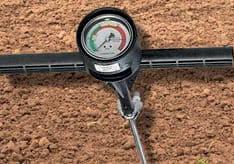









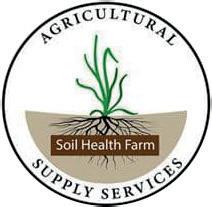
Care is needed with product choice and rates on backward crops, she cautions, while more forward early-sown cereals might benefit from slightly higher rates.
“Growth stage 30 will be an extremely important timing this season. It’s traditionally a disease control timing, but it’s just as important to manipulate crops at this stage to maximise their potential.”
While it is hard to predict disease pressure during the main growing period, certain diseases are likely to be at greater risk due to prolonged wet weather and lack of significant cold temperatures, so close monitoring and early action will be vital.
Mild, wet, conditions have favoured Septoria development in more advanced, early-sown wheats, while eyespot could be more problematic given the wet autumn and generally low varietal resistance, says David Howard, Hutchinsons head of integrated crop management.
“Wet soils may increase take-all spread, and mildew is likely to be a
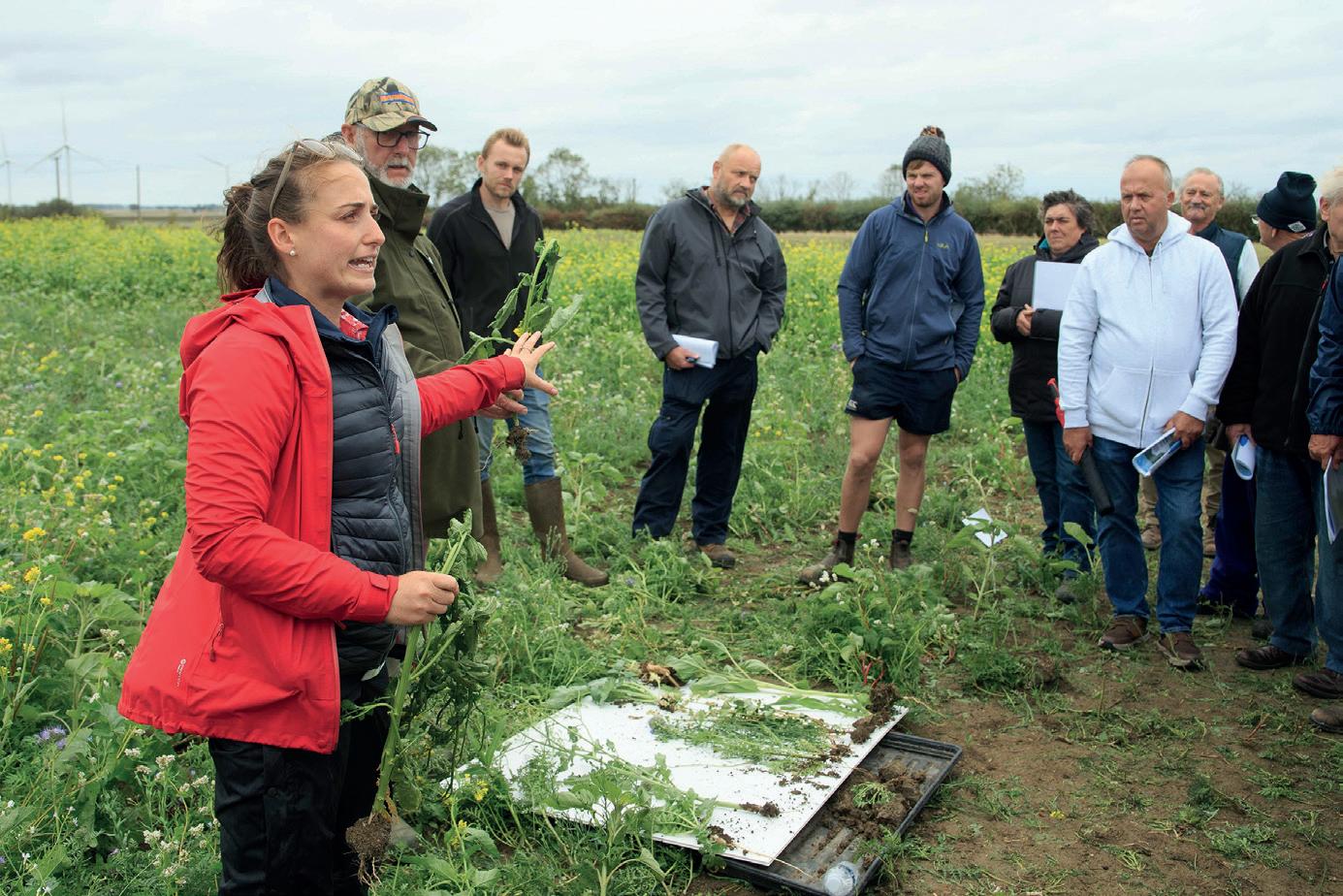
greater risk in stressed crops, perhaps more so in barley, where risk from the rain splash diseases net blotch and rynchosporium are also likely to be greater.
While more backward, later-sown wheats may face lower Septoria pressure, later drilling does usually increase rust risk, and with a lack of hard frosts to kill inoculum so far this winter, rust could be a challenge in some situations, says Mr Howard.

ing’s done to crop stress and development.”
Early action at T0 and T1 will be crucial, with fungicide choices tailored to the specific needs of individual fields, Mr Howard says. He also notes previous trials that have shown good results from using elicitors around GS 30 to increase energy uptake in stressed crops, thereby supporting natural disease protection.
Products that mimic natural disease defence mechanisms are also worth considering for Septoria and mildew protection, but more so as a preventative measure. Perhaps the biggest challenge for disease control will be around spray timings in patchy crops.
Mr Howard advises growers to time sprays based on the parts of the field with the highest proportion of higher yield potential. “Don’t wait for poor areas to catch up and risk letting disease into the good parts.”
“Ironically, we might see some benefit where flooding has taken away the lower leaves that can carry rust or Septoria spores over winter, but that will be balanced against the damage flood-
He also recognises the need to get on with early nitrogen to give backward crops a boost, but says care is needed, as large doses can cause excess nitrogen in the leaf, potentially increasing disease pressure.













Measuring soil carbon content is providing growers with valuable insights for farm management – while helping to generate income from the government's Sustainable Farming Incentive.
“There's so much evidence of a direct and linear relationship between soil organic matter and soil function that carbon content is rapidly becoming one of the most important management KPIs in crop production,” says NRM agronomist Allison Arden.
“It is an essential indicator of a farming business's overall viability and production potential, but there are wider implications of developing management practices that build soil carbon content too.
At farm level, improved soil carbon content is linked to a multitude of benefits, says Ms Arden. These include better soil structure, more efficient key nutrient use, improved moisture retention, healthier soil biology and greater overall resilience.

“Soil carbon content is a very good starting point in itself but there are many associated areas that give additional insight into what is really happening in the soil.”
Many people use NRM's CarbonCheck system to evaluate the natural assets across their farm to get a handle on their existing carbon stocks and to start their own carbon capture journey, adds Ms Arden.
“Those joining the new SFI scheme also use the analysis to ensure they meet their soil action obligations and have supporting evidence for their claims.
“But the ones that benefit the most are definitely those that use the service beyond this and realise it's an invaluable tool in helping them finetune their management, reduce input costs and improve crop production efficiency.
“Measuring a range of parameters associated with soil carbon content is a very effective way to monitor soil health and production potential.
“Benchmarking on-farm results to national and regional best practice then allows producers to make the most informed decisions about adopting and integrating more long term sustainable farming practices.

“CarbonCheck measures organic
“Carbon to nitrogen ratio is also an increasingly important area to look at with regard to crop nutrition particularly when aiming to get the most out of every kg of nitrogen from environ-
ment in soil carbon levels in nine years; the same improvement can be achieved from FYM in 20 years and 20 years of using livestock slurry results in just a 7% change.”
To maximise the control of difficult grass and broadleaved weeds, a range of active ingredients must be applied at the optimum timing(s) and rate. Using multiple active ingredients in a single tank mix is one way of easing workload pressures, with pre-mixed formulations eradicating any concerns regarding product compatibility.
TOWER®, a unique three-way formulation of chlorotoluron (250g/L), diflufenican (40g/L) and pendimethalin (300g/L) is effective at controlling weeds in spring-sown wheat and barley and can be used either as a pre-emergence treatment, or as a postemergence application to control annual meadow grass, common chickweed, mayweed, common poppy and many other broadleaved weeds.
For spring barley fields with a history of difficult blackgrass or ryegrass, an additional mode of action such as flufenacet can be added at the pre-emergence timing. Apply
TOWER® is also approved for use in spring rye and spring triticale and is one of only a handful of herbicides labelled for grassweed control in these crops.
TOWER® offers growers the potential to ‘Power Up’ the control of ALSresistant weeds and can be applied at its full rate as a pre-emergence residual treatment to deliver better than 95% of control
including shepherd’s purse, red dead nettle, speedwell, poppy, chickweed and mayweed.
TOWER® can also be used as an early postemergence contact treatment (when the grassweed target has one or two leaves) when it will deliver a level of performance on a par with its pre-emergence function. Its efficacy as a postemergence treatment will, however, be hampered in


excessively dry conditions, so the best advice is to apply pre-emergence to insure against dry conditions postdrilling.
TOWER® also gives good control of a number of non-label weeds including groundsel, fool’s parsley, fat hen, field bindweed, black bindweed and small nettle, all of which are susceptible to TOWER from pre-emergence up to two leaf growth stage.
TOWER® is a unique residual herbicide containing a three-way mixture of chlorotoluron (250g/L), diflufenican (40g/L) and pendimethalin (300g/L). It provides excellent standalone control of annual meadow grass and broad-leaved weeds and can be used pre- or post-emergence in winter and spring cereals.
ADAMA’s herbicide range also includes a straight pendimethalin product, ANTHEM® (400g/L pendimethalin). This unique mode of action is the ideal foundation in weed control programmes as it offers good efficacy against a wide spectrum of grass and broad-leaved weeds including ALS resistant weeds.
And, thanks to its suspension concentrate formulation, ANTHEM® can be used just as effectively as a standalone product or as a tank mix partner with many other chemistries.
ANTHEM® (400g/L pendimethalin) is a long-lasting residual herbicide for the control of a broad spectrum of grass and




Encouraging farmers to invest in water management will help combat climate change, the government has been told.
Better on-farm infrastructure and investment in technology is vital to mitigate the impact of increasingly unpredictable weather, said the Central Association of Agricultural Valuers in a submission to the Treasury ahead of this month's Spring Budget.
Nine recommendations are included in the 16-page document. They urge Chancellor Jeremy Hunt to consider a number of options to make farming more productive, efficient and able to adapt to current and future demands.
Farmers need to be able to adapt to climate change, and its resulting droughts, floods, storms and extreme heat, says the submission. Investment in reservoirs, irrigation and rainwater harvesting systems are all essential, it adds.
Water storage
It follows another winter which has seen farmland flooded for weeks on end. Flood management works, power systems to support farm operations and controlled environment storage are urgently needed, says CAAV secretary Jeremy Moody (pictured).
“We ask that a class of capital allowance be created so that critical improvements that would ordinarily be within the Structures and Buildings Allowance be treated as plant and machinery, meaning such investment can be written off in the year of expenditure.”
Other recommendations include an income tax relief to encourage letting of land and changes to inheritance tax to remove a bar to environmental uses. The paper also urges a review of cap-

Thousands
ital allowances to stimulate investment in buildings.








“Our fundamental concerns are that the tax system supports farming in achieving a renewed pace of productivity improvement, and so contributes to economic growth and resilience,” says Mr Moody.


“In practice, this means enabling the most proficient farmers to have use of the land and to



A number of measures would encourage farming to be more productive – alongside investment in water management infrastructure, says the CAAV. Its nine recommendations include allowing partnerships and sole traders to benefit from full expensing – writing off investment in plant and machinery against profits – which companies can already do.
If not, the CAAV says the government should increase the Annual Investment Allowance in line with inflation. It has remained at 24.4% since 2019 – and limited to a maximum of £1m. It also argues that the Structures and Buildings Allowance (SBA) is unfit for purpose.
“Farm buildings are distinctive in the wear and tear they face, meaning they have shorter lives than found in other sectors,” said Mr Moody. “Obsolescence is also a factor with new
support them in investing and innovating at this time of great technological advancement.”







'Simple changes could encourage investment'
technologies, increasing standards and regulation, and changing equipment.”
Rather than writing agricultural buildings off over 33 years, farmers should be able to write them off over seven years, as is the case in Ireland, he said.
Investment in environmental improvement works should also qualify, including covered slurry stores and silage clamps, as should pig and poultry buildings and greenhouses, which are highly automated and can become outdated very rapidly.
“The urgent challenge of improving productivity, the need to respond and adapt to the impact of advancing climate change, and the scale of required environmental improvement are such as to warrant a new approach,” said Mr Moody.
“Clear and simple stimuli within the tax system can be powerful levers for positive change.”

‘New changes to government grants are set to make it more attractive for landowners to invest in nature-based solutions, and Trent Rivers Trust are the water management and agricultural experts who can help to make that solution a reality,’ says Ruth Needham, Head of Landscapes and Partnerships at Trent Rivers Trust.
The government has recently announced higher premiums for Environment Land Management Actions that reduce flood risk. This means that natural flood management can provide an additional income stream on any appropriate area of land Payments are likely to be available after summer 2024
To help create clarity on natural flood management and how it could specifically benefit farmers in the Midlands, here, at Trent Rivers Trust, we’ve developed a natural flood management guide that offers practical, comprehensive advice
The guide details more than 20 different natural flood management interventions, from silt traps and cross drains to floodplain reconnection. For each one, clear information on design, set-up costs and the long-term management needs of the measure is provided, so that landowners can see what could work for them, whether that is on arable, horticultural or grassland
‘Natural flood management largely relies on slowing the flow and if implemented in the right places, land can benefit from reduced erosion, improved soil health, structure, organic matter, biology and greater infiltration of surface water This can provide fresh water for people, industry, farming and wildlife; store water for drought resilience, reduce flood risk and increase biodiversity. We talk to the farm from the beginning. They know their land best and we design solutions bespoke to the land in question In our experience, it works best with small interventions linked up with sensible land use across the entire catchment,’ says Ruth Needham.
To download your copy, visit trentriverstrust.org/natural-floodmanagement-guide/ or scan the QR code below, or call our agricultural experts on 07771313 835
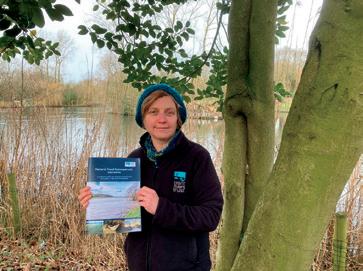

 This free guide, supported by WWF in partnership with Aviva, is available to farmers and farm advisors
This free guide, supported by WWF in partnership with Aviva, is available to farmers and farm advisors
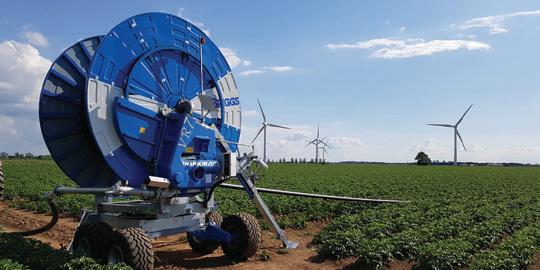




•
Reed cutting buckets and tree shears
360
Email glynnbourne@btinternet.com




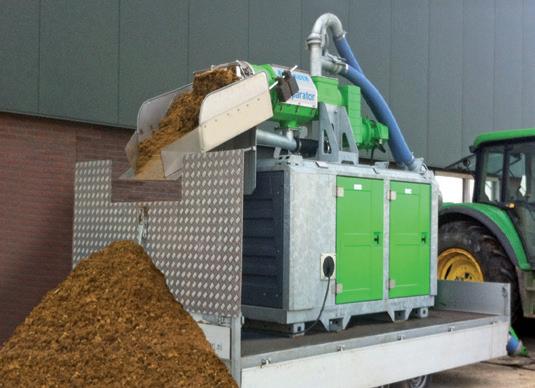
•
•
•





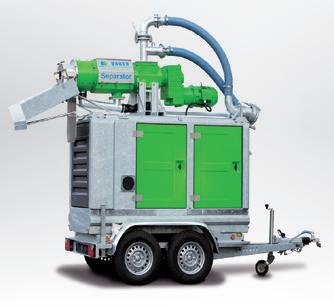


Radio waves could be used to measure soil moisture – helping farmers man age flood risk and make important de cisions about irrigation.
A two-year project using drones carrying synthetic aperture radar equipment to make a high-resolution map of the earth's surface is being undertaken by experts at Cranfield University.
Led by Dan Evans, the project is assessing the accuracy and potential applications of the technology to improve the accuracy of soil moisture monitoring by obtaining detailed measurements at a field scale level.
“By mounting synthetic aperture radar onto drones, we can conduct comprehensive radar surveys of fields, providing us with de tailed measurements of soil moisture.”

The project seeks to improve flood and drought risk management, helping farmers make informed irrigation decisions and plan for extreme weather events. The technology could also find applications in testing the stability of railway embankments.
Flood and drought
The project also aims to identify the effectiveness of radar-based soil moisture measurements across different land use contexts, including grasslands, arable farmlands, and woodlands, says Dr Evans.
In addition to Cranfield University, the collaboration includes experts from the company Surveyar alongside other academic partners, with funding of £30,000 from the Douglas Bomford Trust.
Measuring soil moisture is often labourintensive, time-consuming and costly. But the radar-equipped drones provide a way of continuously and cost-effectively measuring moisture up to 40cm below ground –
New E-series reel irrigators from Bauer have several improved features to make them easier to operate and maintain.
The company has invested heavily over recent years to equip its Rainstar E-series with new digital technologies – including the Smart Rain remote monitoring and control app, says Adrian Tindall, Bauer UK & Ireland sales manager.
“Now, attention has been turned to some aspects of the mechanical components – mainly to improve access for servicing, maintenance and setting up to further improve the operator experience.”
The most obvious visual change is to the side guard that covers the reeldrive turbine and gearbox – but less obvious is that instead of being held in place by ten bolts, the new version
has catches that when released allow the cover to swing away.
That makes it quicker and easier to access components such as the belt that transfers drive from Bauer’s wa ter turbine to the pulley on the chain and sprocket that slowly rotates the drum to pull in the hose and either a rain gun or boom.
Opening the new cover also reveals a larger battery to power the Ecostar 6000 controller with its 4.3in LED touch-screen, which is supplement ed by membrane buttons for the most frequently used functions.
“Users can store up to 12 different irrigation programmes that define re traction speed, pre-irrigation, post-ir rigation and speed zones, and then re trieve them at any time to save having to enter individual parameters for every irrigation session,” says Mr Tindall.
a critical depth for plant growth and yield.
While preliminary findings suggest that UAV-based radar is effective at assessing soil moisture, the project will investigate the impact that above-ground vegetation has on the accuracy of these moisture data across different land use contexts.
With increasingly warm summers and the threat of extreme weather events, Dr Evans said monitoring soil moisture has become crucial for optimising irrigation practices and mitigating the impact of flooding.
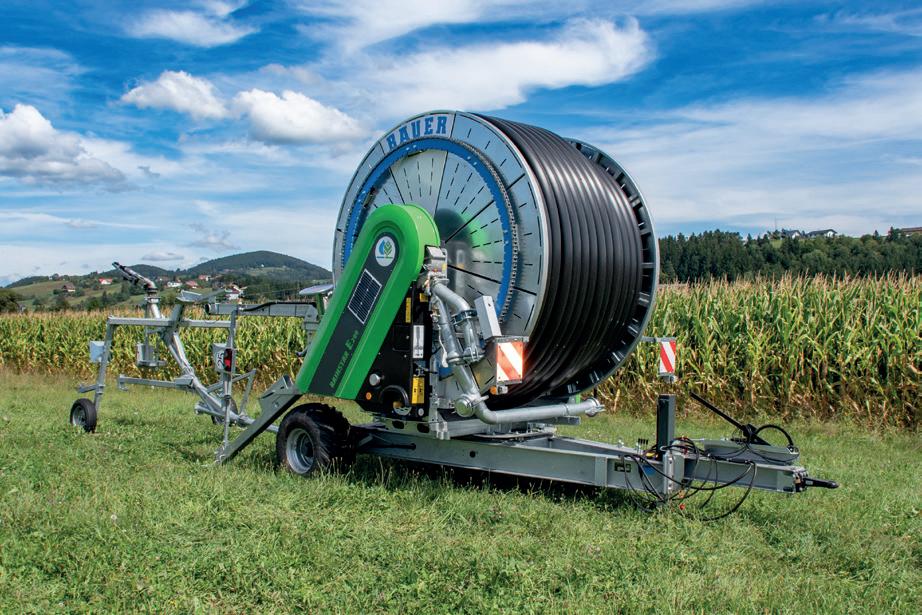
some compelling new features
Remote access via SMS on a mobile telephone enables irrigation managers to not only stop and start the Rain-
ror messages.
A ‘run finished’ message can be activated, and thanks to a digital input on the irrigator’s water meter, the Ecostar 6000 controller also records.

The Environment Agency says it supports farmers who want payment for flood water on their land – but not if the area is a natural floodplain.
Speaking at last month's NFU annual conference in Birmingham, Environment Agency chairman Alan Lovell said using land for water storage was a big issue – and in some locations it was the best way to protect local communities from flooding.
Storing water on farmland was often provided at great cost, acknowledged Mr Lovell – and it was understandable that farmers wanted to be paid fairly doing so, with agreements put in place to enable it to run smoothly. But he also sounded a note of caution.
Mr Lovell said: “We will support where flood storage areas are seen to be appropriate as part of a flood risk management solution. But to be clear, we can’t use public flood money for areas that are already natural floodplains.”
Other routes – particularly through the government's Environmental Land Management scheme (ELMs) could support farmers – but
the agency was unable to use government flood money for it, added Mr Lovell.
That said, Defra secretary Steve Barclay had recently asked the agency to look further at the idea – and how it could work with local people, local groups and internal drainage boards to see where the concept could be taken further forward.
Mr Lovell said: “I know many of you have experienced devastating flood and drought events, and I know it can take a huge financial and emotional toll upon you and your families – including some devastating long term mental health impacts.
“We will never forget that. This winter has been appalling. I have been around the country a fair bit, including a 1600-acre farm in Lincolnshire, entirely underwater apart from the farm and farm buildings on a little island in the middle.”
Thanking farmers for supporting local communities during flooding, Mr Lovell said the three months of 2023 were the wettest since 2000 and the third wettest since 1871. Working with farmers was a vital part of the agency's flood management work, he added.
ome 40 projects across the country will receive £25m in government funding to reduce the risk of flooding.
The money was part of the government’s plan to increase flood resilience. Defra minister Robbie Moore said natural flood management – including wetland restoration, tree planting and other measures – would help improve catchments while slowing and storing water.
Mr Moore said: “It’s vital we use nature as an ally in our work to become ready for climate change, helping to restore the natural environment and protecting homes and businesses. That’s why we’re funding the biggest-ever investment in natural flood management.”
Work will focus on soil and land management – slowing and storing surface water runoff, while also reducing soil erosion and supporting agriculture. New woodland areas and hedgerows will support wetland complexes and the creation of new habitats.
Ponds and leaky barriers across watercourses will slow and store floodwater in the upper reaches of some catchment. Vegetation management and new woodland will intercept the flow of water as it runs downhill, reducing runoff and enabling water to be stored in the soil.
The announcement comes after a range of applications were submitted to the Environment Agency after the launch of the largest-ever investment in natural flood management schemes last September.
Reducing risk
Environment Agency chair Alan Lovell said: “It’s exciting to see such appetite for Natural Flood Management, recognising its value in providing not only benefits against flood risk but also wider support for nature recovery.
“The new funding builds on the government's £15m natural flood management pilot programme which ran until 2021. The Environment Agency is managing the new £25m fund with work taking place until March 2027.”




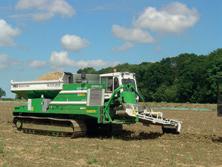
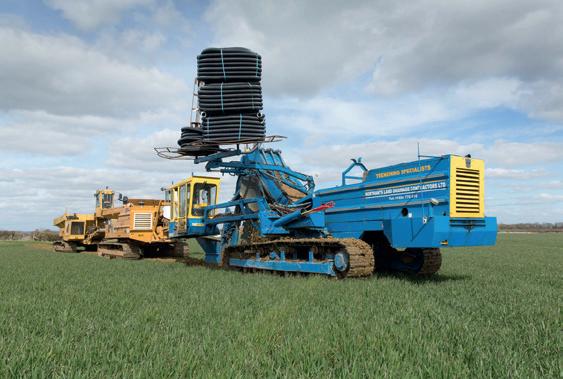
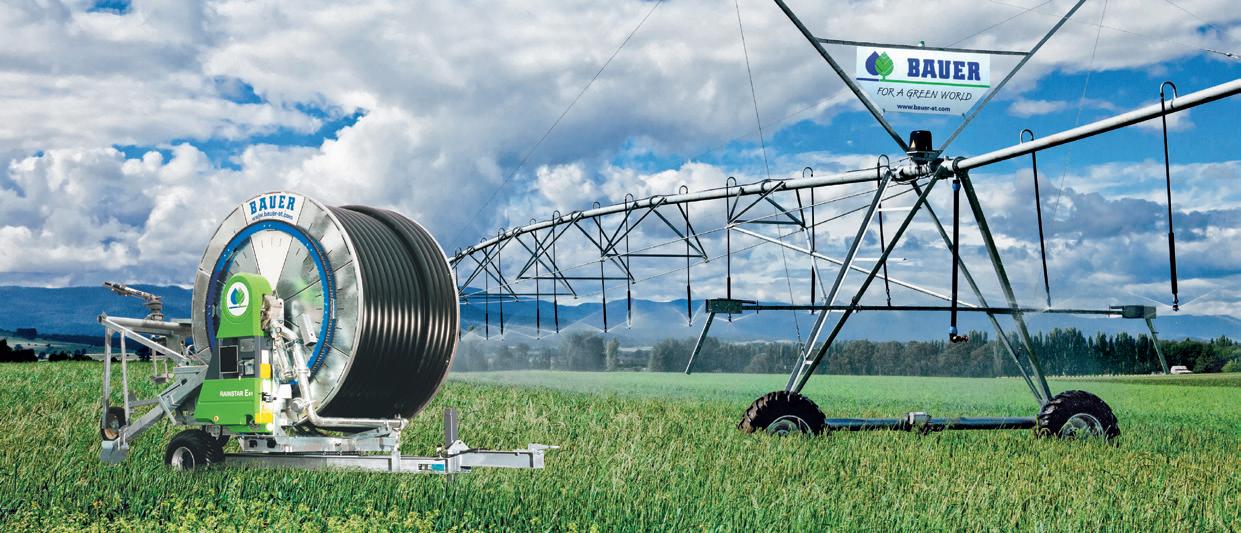




















• Established for more than 20 years
• Makes light work of all drainage types
• Amenity projects –not just farmland
Two of the most recognisa ble names in UK agricultur al drainage are celebrating 23 years of working together.
The relationship began when DMJ Drainage managing director Darren Howell bought his first Mastenbroek agricultural drainage trencher in 2001. The company has since grown into a multi-million-pound business employing 150 people.
Today, DMJ Drainage operates more than 35 trenchers, excavators, tractors, dumper trucks and gravel carts. With 12 Mastenbroek machines spanning drainage trenchers, gravel carts and ploughs, no other operator owns more of the Boston-made machines.
The Mastenbroek 45/20 plow was last used at Heneage Farm, Hainton, in the Lincolnshire Wolds. Some 14km of 80mm perforated land drainage pipe were laid to a depth of 900mm with porous backfill within 300mm of the surface – much faster than an ordinary trencher.
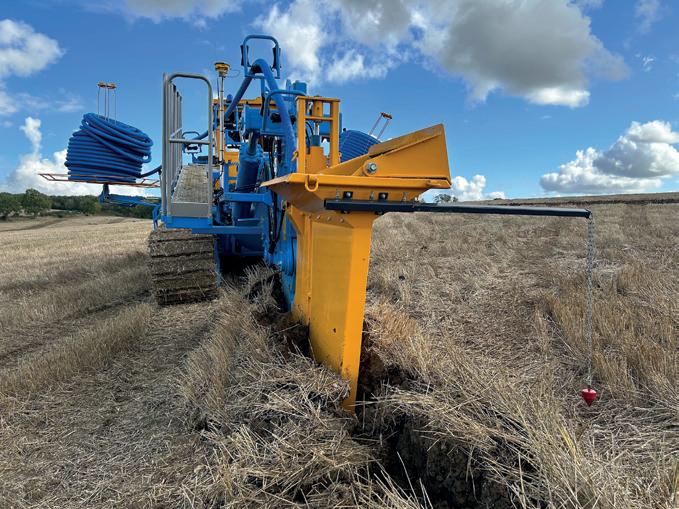
A recent project at Market Rasen has seen DMJ install 4km of 80mm perforated land drainage pipe at a depth of 800mm at 10m apart. This was then backfilled with 20mm gravel within 100mm of the surface.
Established in the UK in 1965 to sell and service Dutch drainage trenchers, Mastenbroek began UK production in Boston in 1977. Now 47 years later, the company's machines are used worldwide to deliver agricul tural drainage installations and utili ty cabling projects.
Race course
As part of DMJ Drainage's continued investment and reinvestment philoso phy, the company recently purchased a Mastenbroek 10/12D trencher after installing drainage on the race track for the Jockey Club at Southwell race course.
“The ground conditions were not suited to our Mastenbroek 30/20, which weighs about 20 tonnes and is not as manoeuvrable as the smaller eight-tonne 10/12D," says Mr Howell. “At the time, we didn't have the orders to justify buying our own 10/12D, so we hired one.
“I was so impressed with its per formance, the minimal contact area of the tracks, and how easy it was to move around the site that I saw an op portunity and bought one of our own. Since then, we've gone from strength
As well as leading to several racecourse projects, DMJ's 10/12D has allowed it to win work in other new areas such as caravan and leisure parks. It comes with a sports field kit, allowing excavated spoil to be transferred
Above and below: DMJ's single blade Mastenbroek 45 20 plough
“The Mastenbroek 45/20 plough features an EU stage 5 Volvo 13 litre, 462hp engine, which we calculate is using 35 litres of diesel an hour, which is amazing. As well as being incredibly fuel efficient, its wearing parts are much cheaper to replace than those on
The 45/20 plough unit, with its single link with slew and tilt control, features a replaceable cutting edge and point that can reach depths of up to 1.8m with six degrees of linkage slew either side of centre and 12 degrees of
Despite using a ripper leg to cut the ground, the Mastenbroek 45/20 plough has surprised DMJ in terms of the tidiness of the spoil it produces and the high-quality finish it leaves.
“The Mastenbroek 45/20 plow lifts the ground in formation, so all the spoil goes back in formation. We used the plow for one agricultural job and were amazed to see winter wheat thriving a few months after the plow had lifted the ground.”
As well as the quality finish and running costs, DMJ operators have also enjoyed working in a large cab, which is comfortable and convenient, with two doors allowing the operator











Flach & Le-Roy Ltd is an industry leader in designing and delivering high performance drying, ventilation & storage systems.

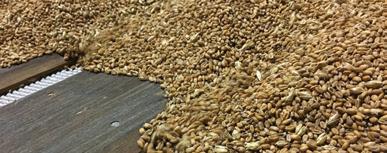
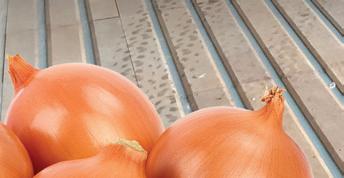

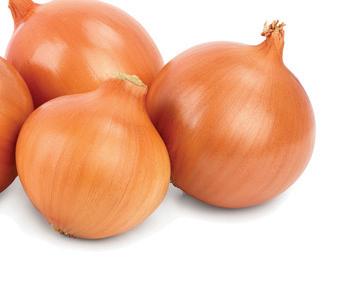


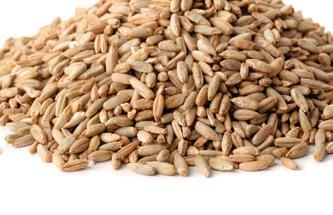


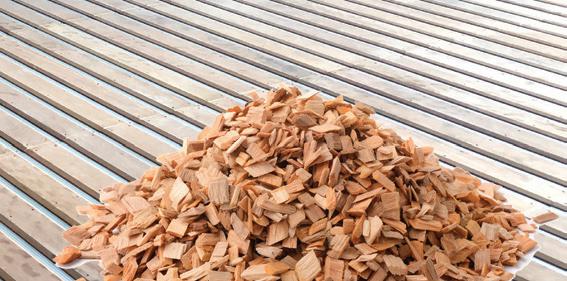

We have been supplying top quality drive-on and box store drying and storage installations to the arable farming industry globally for over 27 years and our business is continuing to grow.

“Drive
Drive-on Floor Systems • Letter Box Duct Systems • Control Systems
Centrifugal & Axial-Flow Fans • Gas Burners • Walling Systems

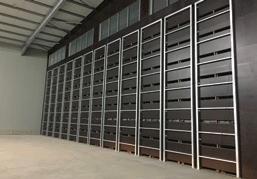


Telephone: 01480 495956
Mobile: 07774 141512
Email: enquiries@flruk.com
Website: www.flr-cropdrying.com
• Important remain vigilant for virus
• Reduced levels of midge activity
•
ndustry leaders have welcomed the relaxation of bluetongue control zones – but say livestcok producers must remain vigilant for the disease.
Temporay control zones that have limited the movement of livestock to control the spread of bluetongue were removed on 19 February – easing difficulties for many sheep and beef farmers in Norfolk and Kent.
National Sheep Association chief executive Phil Stocker said: “Due to a current reduced level of midge activity, some restrictions on movements of live animals from the temporay control zones have now been lifted.”
But farmers still face some restrictions to reduce the risk of the spread of bluetongue, added Mr Stocker. Defra has been operating with the aim of reducing the infection pool when the midge population rises in spring.
“There does remain a risk from infected pregnant females, due to the fact they can give birth to infected offspring, and from entire males as they can infect females either through nat-

ural service or through artificial insemination, so these animals are still restricted from movement.”
The relaxation means than any farm in a former controls zone that is as yet untested will be placed under an individual holding restriction requiring a vet attestation that any animal being moved is not pregnant, or entire in the case of males.
These animals will require negative tests prior to being moved. Castrated males and non pregnant females will be free to move to live and to slaughter.
Mr Stocker said: “Although this update is positive news and will relieve the burden for many, we are keen to encourage farmers across the country to remain vigilant and aware of the risk of bluetongue, especially as the weather warms up into spring.
“Although the current outbreak has been isolated to parts of Kent and Norfolk it is perfectly possible that the dis-

Defra says there is no evidence that infected midges are circulating
“There does remain a risk

ease could be far reaching across the UK as the year progresses.”
The National Sheep Association is continuing to work with industry to ensure the sheep sector is well informed and prepared coming into spring. Farmers are encouraged to keep abreast of developments by looking for updates on the AHDB website.
Bluetongue is carried by midges. Defra said there was currently no evidence that the virus was circulating. Colder weather and the associated decrease in temperature meant midge activity was much lower with midges not actively feeding.
“Low temperatures also mean that the virus cannot replicate in the midge, so even if a midge does feed on an infected animal, the risk of transmission to another animal is very low. This is called a low vector period.”
'Be careful when it comes to movements'
The Animal Plant and Health Agency says farmers can resume livestock movements where there is no risk of disease spreading.
“Where there is a known disease risk, or unknown risk status, APHA will contact these premises directly to restrict specific animals within the premises,” says Aled Edwards, APHA head of field delivery England.
“APHA teams will continue to work closely with farmers to ensure that keepers and
businesses are kept up to date, and that questions and concerns are addressed promptly.”
Bluetongue does not affect people or food safety. The virus is primarily transmitted by midge bites and affects cattle, goats, sheep and camelids such as llamas. The midges are most active between April and November and not all susceptible animals show signs of the virus.
The impacts on susceptible animals can vary greatly – some show no clinical signs
or effects at all while for others it can cause productivity issues such as reduced milk yield, while in the most severe cases it can be fatal for infected animals.
Farmers are reminded that animals imported from bluetongue affected regions must be accompanied by the relevant paperwork to clearly show they meet certain conditions designed to reduce disease risk, such as correct vaccination.
One of the world’s largest food and drink trade shows has provided the platform to showcase high-quality British beef and lamb.
Thirteen red meat and seven dairy exporters from the joined the Agriculture and Horticulture Development Board (AHDB) in Dubai last month to promote world-class produce to buyers from around the globe.
Held at Dubai’s World Trade Centre, the Gulfood show attracts more than 5,500 global exhibitors and thousands of buyers from the food and beverage industry.
Butchery showcase
Visitors to AHDB’s red meat stand had the chance to sample lamb from


the UK and watch a butchery demonstration by AHDB’s Master Butcher Martin Eccles. AHDB’s dairy stand featured cheese and butters, as well as infant formula and milk powders
A special breakfast meeting event took place prior to the show opening with 11 British dairy companies taking part – the seven businesses accompanying AHDB and four others – and meeting more than 20 buyers.
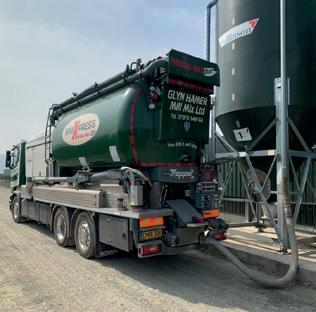
WE PROVIDE MOBILE FEED MILLING AND MIXING SERVICES FOR ALL BREEDS OF ANIMALS AND POULTRY, FROM STRAIGHT ROLLED CEREALS OR HAMMERMILLED PULSES TO COMPLETE MIXED RATIONS AND FEED BIN TRANSFERS.
With numerous suction and discharge options including directly into feed bins or separate bunkers, we are able to provide an efficient, traceable and consistently high standard of service for our customers.
Based in the West Midlands we run a fleet of modern ‘Tropper’ machines specifically built for precise mixing and accurate weighing operated by our experienced, friendly drivers.


To discuss your farm’s requirements please give us a call on:
James - 07584 582 598
Glyn on 07976 548766 / 01568 750 183
E: info@glynhamermillmix.co.uk
W: www.glynhamermillmix.co.uk
AHDB senior halal manager Awal Fuseini said: “Gulfood is a major event in our export calendar and we were delighted to be able to shine the spotlight on our world-class produce for buyers from around the world to see.
“The Middle East is an important market for the lamb sector and the show provides the ideal platform to build on our excellent reputation for high-quality produce.”













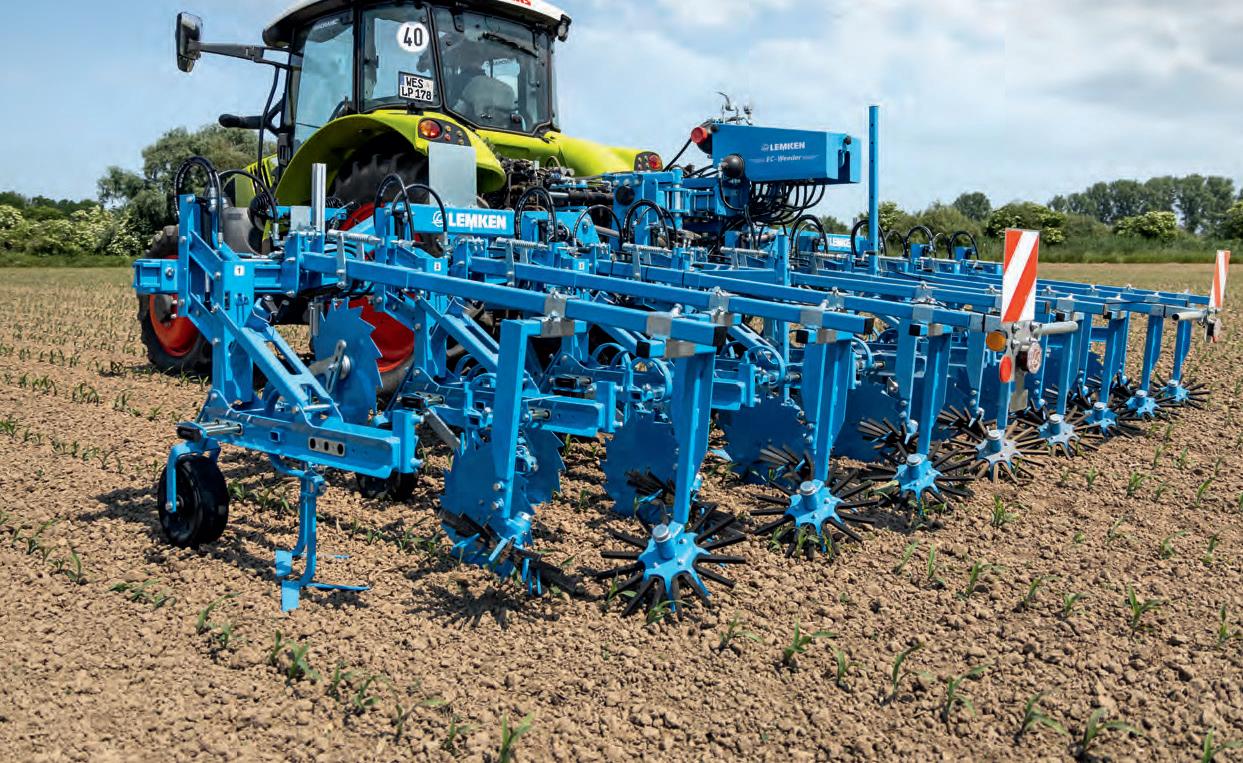

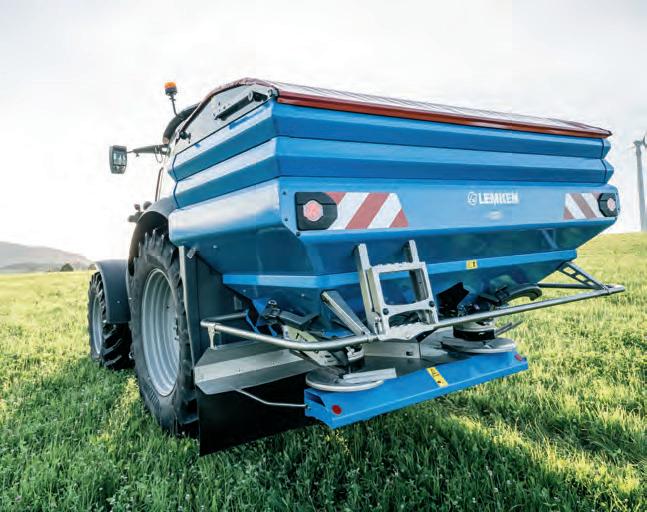

LEMKEN agricultural machinery is distinctive, not only because of its blue colour, but above all because of its quality, versatility and robust designs. We are continuously working towards developing solutions that optimally meet the specific needs of the UK and global markets.
lemken.com

•
•
Beef producers from across the UK will gather at next month's Beef Expo show – the flagship event to celebrate the best of British cattle breeding.
Organised by the National Beef Association, the one-day exhibition is scheduled to coincide with Great British Beef Week – being held on 27 April at North West Auctions, at Junction 36 of the M6 motorway, near Kendal, Cumbria.
Beef Expo’s highly competitive show classes will once again showcase some of the UK’s best bloodlines. A panel of leading experts will address the most important issues facing the industry in an information-packed seminar programme.
NBA chief executive Neil Shand said he was keen to build on the success of the last Beef Expo – which was the first since the Covid pandemic and held on the other side of the country at Darlington Farmers’ Auction Mart in 2022.
Mr Shand said the 2022 event attracted a record number of visitors from across the country to the northeast. He added: “We’re confident we
have the right programme, venue and location to repeat this success in the north west.
“This is a highly productive part of the UK for suckler and beef cattle, and North West Auctions’ combination of experience, expertise, and exceptional facilities make this the ideal venue for an outstanding event.”
In a bid to attract more visitors, the event has been streamlined – to one Saturday only. Free to visitors, the event will focus on top quality cattle and the importance of sharing beef performance information.
“Beef breeders and farmers are facing a very significant challenge in the transition of UK farming policy after Brexit,” said Mr Shand.
“The aim is to create a perfect platform for everybody involved in the industry to network, find out how to make the best of the grants and subsidies available, and recharge their enthusiasm and commitment.”
North West Auctions managing director David Pritchard said he recognised the importance of the event for beef producers – and was very mindful of the particular challenges faced
part of the NBA Beef Expo – will cast their eye over some of the highest quality UK cattle.
Northamptonshire’s Frank Page will judge the Native and Continental classes and the Supreme Championships. Meanwhile, Lincolnshire’s Jonathan Lyon will judge the Baby Beef classes, the Baby Championship and Young Handler classes.
The National Commercial Cattle Show will see some 120 head of cattle compete in the 10 cattle classes for steers and heifers with the overall winner taking home the Supreme Championship title.
Mr Page farms 336ha near Elkington. The family’s cattle enterprise comprises 140 beef suckler cows, with Limousin x British Blue or British Blue x Limousin cows put to British Blue and Limousin Bulls.
“We have tremendous livestock here in the UK and I am looking forward to seeing the cream of the crop,” he said. “In terms of what I will be looking for, it will be well fleshed, stylish, correct cattle with good conformation.”
Mr Lyon farms 130ha near Bourne in Lincolnshire. The farm is home to 70 suckler cows and a flock of 140 ewes. The Limousin x and Belgium Blue x run with three pedigree Limousin and one Belgium Blue bulls.
“An animal which catches your eye when it comes into the ring, with a wide, square stance and a very good top line, I’ll be looking for good depth in the hind quarter and whether it’s a calf or a bigger animal it needs to have a good, full loin.”
by farmers.
“It is a privilege to be chosen to host it again here at our J36, Rural Auction Centre in 2024 and we are very much looking forward to working with the NBA to make it an event to remember for those who are both exhibiting and attending.”





Sheep farmers with surplus lambs to rear over the 2024 lambing season are being encouraged to make the most of these newborns’ early life growth potential to boost flock returns.
Maximising lamb numbers sold per ewe is a key benchmark for a successful sheep farming enterprise. This mean rearing some third lambs and orphans off the ewe.
But with lamb prices currently trending 15% ahead of last year, rearing these surplus newborns quickly and efficiently yourself to potentially target an earlier premium market makes sound economic sense.
Feeding a good quality, proven ewe milk replacer alongside good husbandry practices will help you capitalise on the lamb’s inherent early life, pre-weaning growth potential and be able to wean plenty of excellent extra lambs as soon as possible.
When it comes to rearing surplus lambs successfully, it's important to follow five crucial steps for best results:
1 Don’t compromise with colostrum feeding
As with all newborn lambs, the first priority is to ensure every surplus lamb receives sufficient colostrum (50ml/kg liveweight per feed and a minimum of 210ml/kg liveweight within the first 24 hours). This feed provides essential nutrition, as well as the important antibodies to help newborns fight off infections.
2 Choose the optimum rearing system
Surplus lambs can be reared on milk replacer via bottle, through ad lib bucket feeding or with automatic machine feeding. The method you choose will typically depend on the number of surplus lambs you have and the facilities that you have available.
Using a bucket or machine means training lambs to suckle. Be patient. If removing a surplus lamb from the ewe, take it away at 24 hours old, then leave it for a few hours to become hungry before gently introducing it to the teat.
3 Replace ewe milk for higher growth rates
Feeding trials with ewe milk replacer at Harper Adams University College and Reaseheath College (2021) have demonstrated surplus
lamb growth rates of over 300g per day. All lambs weighed at least 10kg at weaning at 35 days of age.
Lambs reared on ewe milk replacer mixed and fed cold from about a week of age to weaning drink as much and perform as well as lambs reared on warm milk, according to additional work at Reeseheath College in 2023.
This highlights the opportunity to rear extra lambs off ewes on ad lib cold milk where boiler heating capability may be non-existent or compromised.
4 Feed enough milk powder
A single lamb reared artificially to weaning (at an average of 35 days of age) will require a minimum of 9.5kg of Lamlac (equating to 47.5 litres of reconstituted ewe milk replacer).
5 Get your lamb husbandry right
Lambs reared artificially will need constant access to fresh, clean water at all times. Top quality creep feed should be readily available to lambs and be offered fresh at least once a day, with refusals being fed to older livestock.
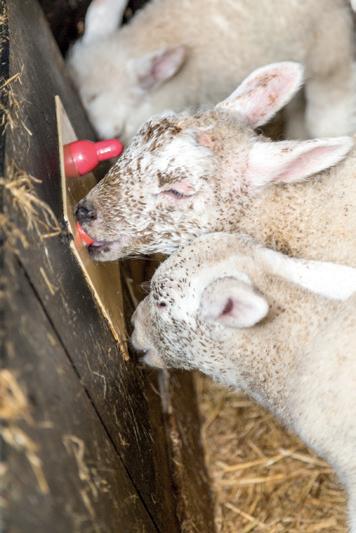
Introduce clean, dry straw – preferably barley into racks. Don’t feed ad lib high quality roughage, for example hay, during milk feeding as this can depress concentrate intake and delay weaning.
For optimum rearing results, don’t keep more than 25 lambs in a pen and keep similar ages and sizes together. Lambs must also have access to a clean, dry, straw-bedded lying area which is well ventilated but draughtfree. Check your lambs at least twice a day.
Finally, maintain scrupulous hygiene protocols. For example, all feeding equipment should be thoroughly cleaned each day and disinfected twice weekly.
Jessica Cooke is research and development manager Volac, which manufactures Lamlac ewe milk replacer
Farmers are reminded to take extra care when formulating in-lamb ewe diets following reports of variable forage quality.
Results from more than 200 big bale samples provided by sheep farmers show average energy levels of 10.2 ME/kg DM, protein levels of 13% and a dry matter of 50%, says Bryn Hughes, national sheep and beef specialist at Wynnstay.
“There is a big range within the samples, with some low energy and low quality, while some are high quality. There was a lot of silage made in September which is variable, but some surprisingly good forage was made in the autumn.”
Mr Hughes says ideally farmers should undertake forage analysis to understand the quality of their forage, so they can formu-
late a ration specific to their situation. If this is not possible, he advises that farmers should assume forage is 10 ME or lower.
“When formulating rations for in-lamb ewes, it’s important to consider the ewe's energy requirements depending on her size and the number of lambs she’s carrying. Once you know the value of the forage, you can make up the nutritional deficit with concentrates.
“When balancing the diet, there are several nutritional elements to consider. It is also important to look at the mineral profile of the diet, as it needs to contain calcium, magnesium, phosphorus and at least 125mg vitamin E as well as cobalt and selenium.
“The energy level of the cake should be at least 12.5 MJ to provide the starch and sugar required by ewes and contain a protein content of 18-19%, with at least 5% digestible undegraded protein (DUP),” he says.
• Impact on animal health and profit
• Investigate any abortions immediately
• Seek veterinary help and information
More than 30% of GB sheep flocks don’t know their bar ren ewe rate or are reporting a figure greater than 5% after lambing.
The finding follows an online sur vey of 966 sheep flocks conducted by MSD Animal Health. Animal health livestock veterinary adviser Kat Bax ter-Smith described the figure as con cerning – and urged farmers to make amends.
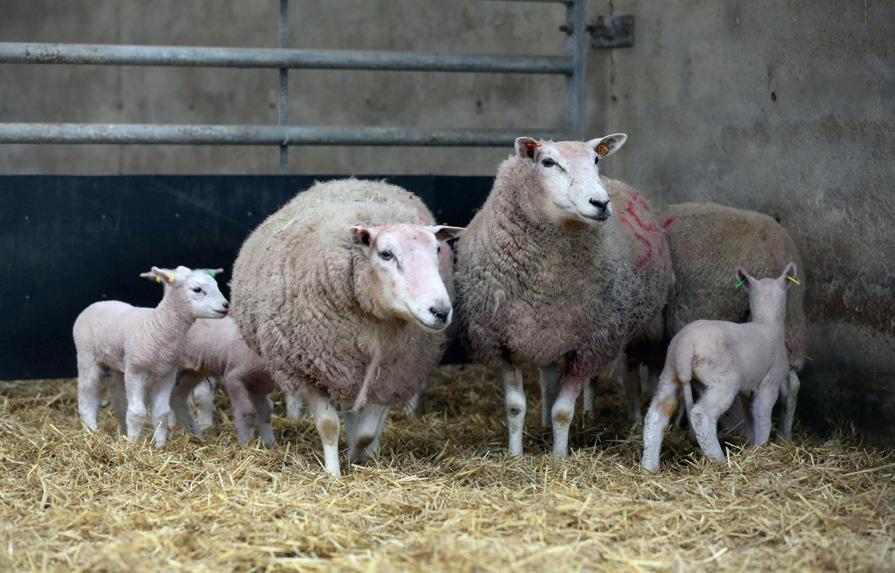
“We’d advise any sheep farmer experiencing a barren ewe rate greater than 2% to discuss their flock health situation with their veterinary professional – and to rule out any potential underlying disease cause,” said Dr Baxter-Smith.
Some 27% of farmers reported a barren rate of 2-5% with only 42% meeting the accepted industry target of fewer than 2% ewes barren. Worryingly, one third of farmers said they did not investigate potential causes for abortions.
But it wasn’t all bad news. More than 45% of the farmers surveyed said they investigated abortions immediately in consultation with their vet. A further 21% tag any barren or aborting ewes for blood testing after lambing.
“This is what we would recommend,” said Dr Baxter Smith.
Ewe reproductive failure, neonatal lamb disease and mortality are the three biggest factors limiting better flock productivity – with toxoplasmosis and enzootic abortion continuing to be significant causes of these unwanted flock heath issues.
MSD Animal Health has now launched its subsidised 2024 FlockCheck diagnostic scheme, which allows farmers in England, Scotland and Wales to blood test their flock for exposure to
toxoplasmosis and enzootic abortion (EAE).
All farmers have to do is ask their veterinary professional to take blood samples from six to eight aborted, unvaccinated ewes, or from barren ewes or ones that have produced weakly lambs.
“The blood test has proved to be an extremely useful flock diagnostic tool in terms of helping to identify the potential presence of any key underlying productivity limiting disease,” said Dr Baxter-Smith.
She added: “Experience has shown that the results certainly help vets and their farmer clients make more informed decisions about appropriate flock health measures.”
Annual FlockCheck blood test results consistently demonstrate that a significant proportion of the aborted ewes tested have been exposed to either toxoplasmosis or EAE – and sometimes both.
For example, 2023 blood test results from more than 3,700 ewes showed 77% of 526 sheep farms had been exposed to toxoplasmosis and 17% to EAE3; with 13% of farms showing evidence of exposure to both pathogens.
This is consistent with a recent analysis by experts at the Animal and Plant Health Agency who found that toxoplasmosis and EAE were the most common diagnoses of sheep abortion between 2002 and 2019.
Both these infectious causes of abortion can be responsible for reducing the number of lambs per ewes mat-
Farmers should keep a close eye on ewes and lambs.
ed, which can increase workload and stress during lambing,” said Dr Kat Baxter-Smith.
Profit may also be reduced significantly, she stressed, but diligent checking could help improve a flock’s potential and overall economic performance. Sheep can become very easily infected by toxoplasmosis, for example.
“Toxoplasmosis, caused by infection with the Toxoplasma gondii parasite, does not just cause abortion. It is also the main infectious cause of early embryo loss in sheep and a very common cause of barren ewes or weak, sickly live lambs.
“It is likely that almost all flocks in Great Britain have been in contact with this endemic parasite, which means all breeding sheep should be considered at risk.”
“
A blood test is very useful
Sheep pick up the toxoplasma parasite from the environment and normal biosecurity measures are not enough to control the disease. The eggs can survive in the environment for over a year so steps should be taken to protect sheep.
“Fortunately, the disease can be controlled effectively by a simple vaccination regime. What’s more, the costs of a vaccination programme can be easily covered by a reduction in future flock barren and abortion rates.
“|In reality, every ewe should be vaccinated before she breeds because of the widespread disease threat and the significant financial losses.”
• Make easy wins your priority
• Identify simple farm measures
• Be realistic about crop yields
Atainable Farming Incentive – deliver ing bigger benefits for farm businesses and for the environment, say advisers.
“While 2024 has started with the promise of numerous new SFI options to be introduced during the summer, coupled to a mixed SFI/countryside stewardship scheme, there is much to gain from making a start with the scheme as it currently stands,” says Agrii consultant Paul Pickford.

“There is little doubt that Defra has succeeded in achieving one of their main objectives for the new SFI application service which is to make it quicker and more straightforward for farmers, but it's still a daunting task for many.
“With 2027 being the last payment under the old BPS scheme, it's important producers understand as much as possible about what SFI offers and how they can make it work as effectively as possible in their business.”
The areas and business practices producers should act on first are probably things that are already being done, suggests Mr Pickford.
“To net £6/ha and an additional payment of £97 per agreement, all you have to do is test your soil organic matter and prepare a soil management plan on the nature of your soils and the risks they might be exposed to in the future.
“Most producers will be doing this to an extent anyway as part of the Red Tractor scheme and would also have carried it out under cross-compliance. Once you have done this, you also get access to a management payment of
£20/ha for the first 50ha of your land.
“Making an assessment of your hedgerows, size, width, height etc., will pay you £5 for every 100m. You can then cut them every year, as long as you cut them a little higher, or you can do this every second or third year for a further £13/100m.”
On the same theme is the annu al payment of £1,129 available un der SFI for completing an Integrat ed Pest Management (IPM) plan, he points out.
“Most producers will be doing this anyway as part of Red Tractor. It's similar for the nutrient management plan and, whether under the NVZ rules or the farming rules for water, everybody should already have one of these and it's worth £652 under SFI.
“Between management, IPM and nutrient management plans, there's just under £2,800 on offer within the scheme and that's a good start.”
If you are going to put in new corners and buffer strips you will be taking land out of production and this is where things get a little more involved, says Mr Pickford.
ly making some good money, but there will be parts of that field, whether it's a boggy corner or a shady bit under a hedge, that might only be doing 5t/ha.
“Choosing to grow a pollinator mix, wildflowers or some winter bird food on that particular piece of land could not only make a more positive contribution to the environment, it would make you more money.
“Those three options will all make a gross margin of somewhere just over £550/ha which could be considerably more than you would have earned by growing 5t/ha of wheat.”
In many cases, growers will know exactly where their least productive areas are but in some instances this may need a bit more investigation, advises Mr Pickford.
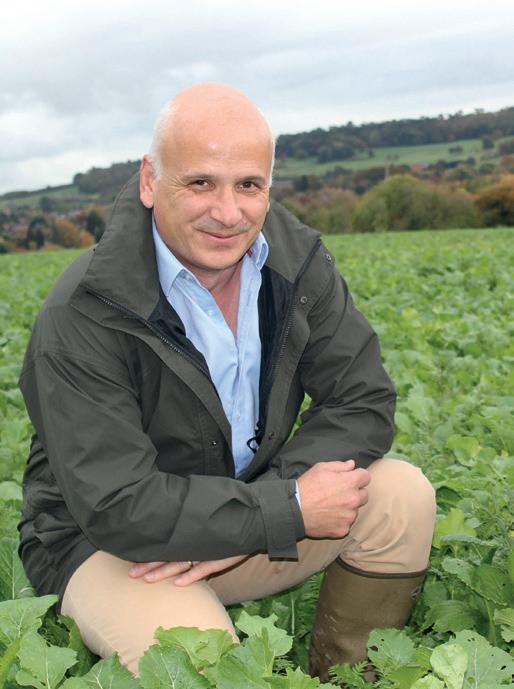
“If the average yield of a particular field is 10 or 11t/ha, then it's obvious-
“The bad bits are obvious, but the more marginal areas will need a bit more work to identify. If an area has always produced 4 - 5t/ha that's a given. But if it produces 7t/ha in most years and a bit more in some, that's
“Some of the benefits from looking at the finer detail may only be small, but at the end of the day it is the aggregation of these improvements that will make all the difference.
“Take the case of headlands for example. It could be that you have turned on two particular headlands for many years without really appreciating the
“Looking at yield information from the last 3 - 5 years could tell you yields are down 15% win these areas, probably as a result of compaction, and a quick calculation can reveal exactly what that is costing in money terms.
“It could be that a better result can be achieved through planting some wildflowers or pollen and nectar (IPM2 or AHL1) and using that
“The last thing you want to be doing is replacing profitable cropping with game cover, for example, through a lack of imagination and information or simply time to evaluate the situation properly.”
• Farmers account for fewest purchases
• Corporate investors snap up farmland
• Lifestyle buyers and big purchases
Non-farmers purchased more than half of all farms sold on the open market last year, suggest the latest figures from land agents Strutt & Parker.
Farmers accounted for the lowest level of transactions on record during 2023 – equivalent to only 44% of open market transactions during the year when historically they have tended to be involved in 50-60% of purchases.
Strutt & Parker said the figures confirmed the significance of private and institutional investors in the agricultural land market. This included overseas investors and corporations seeking to secure land for environmental reasons, including carbon sequestration.
Larger farms
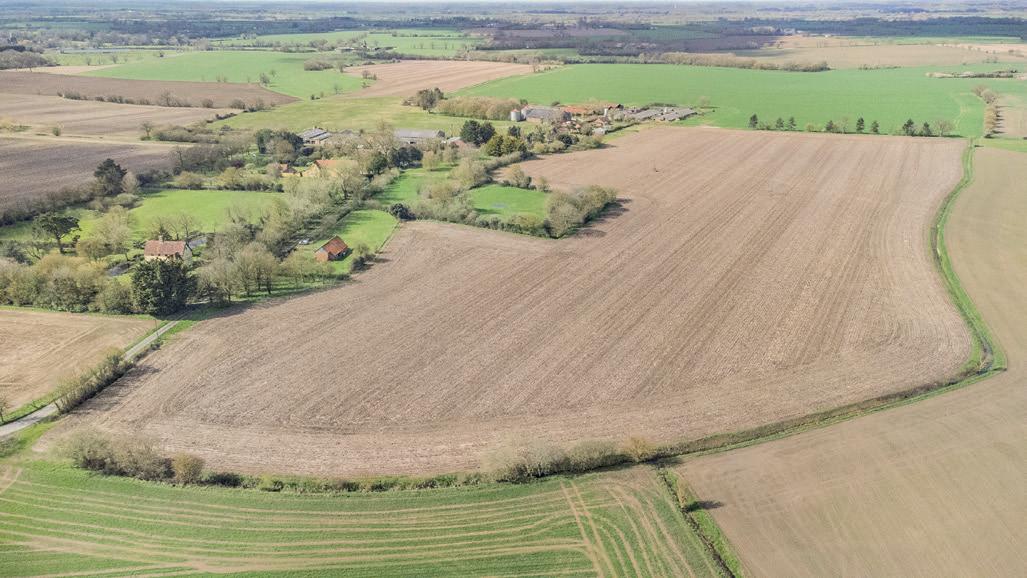
the marketplace this does not necessarily mean that the land in question is being taken out of food production. “Many of the farms and estates continue to be productively farmed,” he said.
Non-farmer buyers – who include a mix of private and institutional investors and lifestyle buyers – accounted for 56% of sales. Because these purchasers also tend to buy larger farms, they bought a larger area of land than farmers too.
Private investors were involved in 28% of transactions, institutional investors in 13% – a rise of 10% on 2022 levels – and lifestyle buyers in 16%.
“The growing role of non-farmers has proved to be a defining feature of the farmland market in recent years,” says Matthew Sudlow, head of Strutt & Parker's farm agency. “What we have seen over the past 12 months is that farmers have understandably become more cautious.”
Factors included higher interest rates, falling support payments, cost pressures and the impact of some horrendous weather conditions. Meanwhile, investors and lifestyle buyers continued to see farmland as an attractive and safe long-term investment.”
Food production
While non-farmers are more active in
“Some of their new owners are placing more of a focus on regenerative farming techniques and improving biodiversity. Although there has been lots of media attention about land being bought for tree planting, the acreage involved in England at the moment is still tiny.
A 197-acre block of land in Suffolk, sold in September 2023 with a guide price of £2,000,000
This led to a slightly lower percentage of farms and estates selling at or above the guide price. That said, high prices have continued to be paid for bestin-class properties, pushing up average values, added Mr Sudlow.
The average price of arable land in England rose by 4% between 2022 and 2023, with an average price paid of £11,300/acre. Over 70% of the arable land traded in England during 2023 made more than £10,000/acre.





Context is everything when it comes to looking at trends, added Mr Sudlow. The total amount of land bought and sold each year typically represented less than 1% of the total agricultural land area, he explained.




As is usual, there was a much greater variability in pasture prices, because grassland can differ so much in terms of quality, with prices ranging from a low of £4,000/acre to a high of £16,100/acre, with an average of





“Even if the amount of land being bought by green investors is growing, it still represents a tiny percentage of the total land area. The reality is that most agricultural land continues to be in the hands of farmers despite what looks to be a significant shift in buyer types.”



The Farmland Database records the sale of all farms, estates and blocks of publicly marketed land in England over 100 acres in size. It shows overall that demand was slightly weaker in 2023 with interest becoming more variable in some regions.






£8,700/acre. in

At 75,500 acres, supply on the open market fell slightly in 2023. But it was the second highest total in the past five years. Once off-market sales are factored in then it is estimated that well over 100,000 acres were available, which is the highest acreage for a number of years.






• More than 50 additional options
•
• Much easier application process
More than 10,000 farmers have now applied to join the Sustainable Farming Incen tive (SFI) – and receive payments ac tions that support food production and the environment.
One-in-eight eligible farmers hav ing submitted applications for the Defra scheme in the four months since it re-opened last September. This is on top of the 32,000 Countryside Stewardship agreements which are already in place.

tive has something on offer for every type of farm business, so it’s pleasing to see the scheme proving popular with farmers across England.
are under SFI management, says Defra
The SFI pays farmers for taking actions that support farm productivity and resilience while protecting and enhancing the environment. Defra said it had attracted applications from farmers across the country, with every type and size of farm business represented.
As of January, 174,000ha of arable land are now being managed without insecticides. A further 71,000ha of low input grassland are focused on improving sustainability, and almost 15,000km of hedgerows are under management.
It comes as Defra also announces the winners of the On-Farm Environ-
“For those who have not yet applied, I encourage you to take a look at how the scheme could work for your business so you can join the thousands of other farmers already getting paid.”
The relaunched scheme includes a simpler application process – developed by Defra following farmer feedback. There are 50 new management options for farmers to choose from and a 10% average increase in payments.
Help and advice
Farmers joining the scheme can be in Countryside Stewardship at the same time – so long as the actions they choose are compatible. Some 23 actions are already on offer with more to follow when the scheme ex-
It has something for everyone
Urging farmers to apply soon er rather than later, Defra said this would ensure growers could benefit from funding available now. They could then add actions to their agreements annually – or have multiple agreements – if they wanted to carry out further actions.
Sector-specific webinars will be held this March to give farmers and land managers a chance to give their feedback and learn more about SFI. Farmers can find out more about upcoming webinars and Defra regional events by visiting www.defra.gov.uk.
Defra representatives will be on stands at agricultural shows this summer with more information as it is announced. Farmers can also access free business advice through the Farming Resilience Fund, or by calling the Rural Payment Service helpline on 03000 200 301.
Land agents and farm business advisers Bidwells has made two appointments to its agriculture and environment team.
In a senior consultancy role, Michael Muncey worked for Bayer in Europe before being appointed country manager for the company in the UK and Ireland. He will provide consultancy about enhancing farm and agricultural assets to landowners across the UK.
Matthew Page joined Bidwells as a graduate consultant after finishing a degree in agriculture at Harper Adams University. He will deliver farm management and consultancy
services, with a key interest in the sustainability of modern agriculture.
Ian Ashbridge, partner in Bidwel ls agriculture and environment team said: “Both Michael and Matthew’s ap pointments are really exciting as they will continue to strengthen the knowl edge and skills within our team.
“The agricultural outlook is changing fast, as post-Brexit poli cy begins to be implemented and the transition away from area-based sup port payments takes effect. While prices for soft commodities have in creased sharply, farm businesses are also seeing unprecedented cost pres sure.”

 Joining the team... Michael Muncey(left) and Matthew Page
Joining the team... Michael Muncey(left) and Matthew Page

Changes to permitted development rights could benefit farmers, Suzanne
armers and landowners could find it easier to convert old buildings into new homes following changes to permitted

The UK is facing a national shortage of good quality and affordable homes, so a raft of new measures have been suggested to stop unnecessary planning red tape slowing down the delivery of new properties.
One of the ways the Government is proposing to make the planning system more efficient and effective to overcome the shortfall in housing supply is by amending permitted development (PD) rights.
Some of these proposed changes apply to agricultural permitted development and, if made law, new legislation will soon allow farmers to diversify the use of buildings and deliver new housing on their land without the need for a long and arduous planning process.
The first planned changes are to the size and number of Class Q homes – agricultural buildings converted into dwellings – which can be delivered by a farmer.
This will allow more homes to be delivered, and expand the type and location of buildings that can benefit from the right as well as extending the scope of works that can be undertaken.
Government proposals are to simplify regulations to a single maximum floorspace of 100 or 150m2 per home, while the maximum number of homes increasing from five to 10 per agricultural unit with an overall maximum floorspace changing use of 1000sqm.
This encourages farmers to deliver a greater number of smaller homes on their land, by re-using existing buildings and thereby reducing the pressure to build homes on greenfield sites, says Ms Tucker.
“It's worth noting that whatever building you would like to convert into a dwelling must be suitable for conversion. Full demolition and rebuild is not allowed.
“Permitted works for a barn conversion include things like the installation or replacement of windows and doors or adding water, drainage, gas and electricity supplies.”
The proposed changes suggest that rear extensions to Class Q conversions be allowed. Previously, any increase in the size of the original agricultural building was not allowed but this could be waived in the future.
This could allow single storey extensions of up to 4m to the back of a building if the land is already hard-surfaced (for example if it’s a farmyard), with any extension falling within the overall floorspace limit.
Whatever dwellings farmers have planned, the existing agricultural building must comply with minimum space standards (a floorspace of 37sqm) before being granted permission to be developed.
The proposed new Class Q PD rights could be extended to apply to National Parks and Areas of Outstanding Natural Beauty with a view to delivering more rural homes in such locations through the re-use of underused buildings.
The proposed allowance for rear extensions would not apply in these locations and World Heritage Sites are not included within the areas benefitting from this proposed expansion of the PD rights.
Changes to permitted development rights
A potential conversion must be suitable
seek to bring back into use agricultural buildings which are no longer part of an established unit.
Under the proposed changes, planning for a change of use could be granted permission, for example, for a barn which was once part of a working farm, but is no longer part of the main agricultural unit.
There are also proposed changes to the PD rights allowing changes of use of buildings from agricultural to commercial use (Class R). This includes extending the legislation to buildings currently used for forestry or equestrian use.
It would allow different uses, such as outdoor sports or fitness or the processing of raw goods which have been produced on the farm and will be sold on site. It could also allow a mix of uses and a doubling of the allowable floorspace to 1,000sqm.
You may want to extend or build more properties on your farm for your own agricultural use, and under the proposed changes, there could be greater flexibility to do this.
Class A of Part 6 – which permits the building or extension of agricultural buildings and excavation and engineering works on units of 5ha or more – could be amended to increase the size limit by 500 square metres.
This would allow for any new building or extension erected to include other such development within the last two years to cover up to 1,500m2 of ground area.
Class B of Part 6 (relating to smaller units of less than 5ha) could also be amended to raise the ground area limit within the rolling two year period to 1,250m2, up from 1,000m2.
Suzanne Tucker is a partner at Shropshire law firm FBC Manby Bowdler




Contact
on: 01948 667 113 info@wilsonfearnall.co.uk www.wilsonfearnall.co.uk

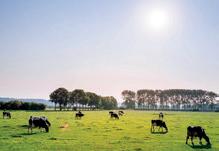


With the phasing out of direct payments, farmers and landowners are being encouraged to diversify their business to make up for this lost income stream.
Whilst there are seemingly endless opportunities to generate alternative income, including BNG, SFI, energy projects, change of use, added value and direct sales to name but a few, making sure you understand your existing business is a key first step in the process advises Ellen Plowright from rural property specialists Wilson Fearnall.
‘Before you embark on a new venture it is important to understand where you are now. Identification
of key strengths and weaknesses of the core business is vital before starting to consider how a viable diversification opportunity will support or conflict with what’s going on already.’ Explains Mrs Plowright. Support from experienced and practical rural professionals is invaluable in this critical benchmarking exercise, before more detailed input can sought on wider matters including environmental schemes, grants and finance, planning, taxation, resourcing and succession planning. Every farm is different and assessing your own unique selling points is the only place to start!








Rebellion. It's happening across Europe. Farmers are protesting against low prices, unachievable carbon targets, unfair foreign competition and rising costs.
You have to chuckle silently when French farmers complain of an uneven playing field and dwindling farm support payments. How many years have they ignored all the rules despite being the biggest beneficiary of money from Brussels? They seem to be a law unto themselves.
But the French get results. What do us British farmers do? We moan and groan and accept our fate. Our union says protest should be the last resort – doing nothing to support our stance. Rather than laugh, we should applaud our fellow French farmers and their union leaders.
Thousands of French farmers block major roads and the majority of the French popu-

lation continue to value and support them. Here, farmers in Wales hold a demonstration at Carmarthen livestock market and so few people notice they could almost be invisible
The French union is so powerful that French prime minister Gabriel Attal feels moved to defend the farming sector calling it “our strength, our pride”. Mr Attal has already met with French farm leaders and given in to their demands.
He has paused on the new pesticide ban, reversed a price hike on tractor diesel and pledged to go no further than EU law requires when it comes to environmental restrictions. A long list of promises or grand words to placate the French farmers?
Environmentalists are concerned. They question France's commitment to planet-friendly policies in the face of such protests. But French farmers can no longer earn a living due to cheap imports, reduced subsidies and a rise in production. Welcome to the real world!
French farmers face similar problems as farmers here in Britain. Our incomes are shrinking. Most of our farms are classed as either arable, livestock or mixed. But the French include vineyards and cheese-makers – farming is a fundamental part of their national cultural heritage.
Unlike our own NFU, the French have smaller unions but more of them. These un-
ions vary in their ambition and commitment to the cause. Taken together, though, the power of French farmers and the power of their agricultural sector should not be underestimated.
Smaller local protests have been held here. And it's great pity that our own union lacks the power or steel to organise any similar French-style action. Weak and unable to influence government policy, its time for a radial change in our agricultural sector.
At the very least, the NFU should be taking out advertisements in local newspapers highlighting the gulf between retail food prices and farmgate returns. But in reality, much more is needed to fight farming's corner – much, much more.
With a keen focus on reducing greenhouse gas emissions, government policies are slowly killing our farms. Making a living from food production is difficult enough without needless meddling by politicians who see farming as part of the problem rather than a potential solution.


So we plod on accepting what is pushed upon us – and wait for the real possibility that is a change of government. It's not an ideal situation but it is one that has remained unchanged for decades. And it will stay that way unless our unions start to make real political progress.





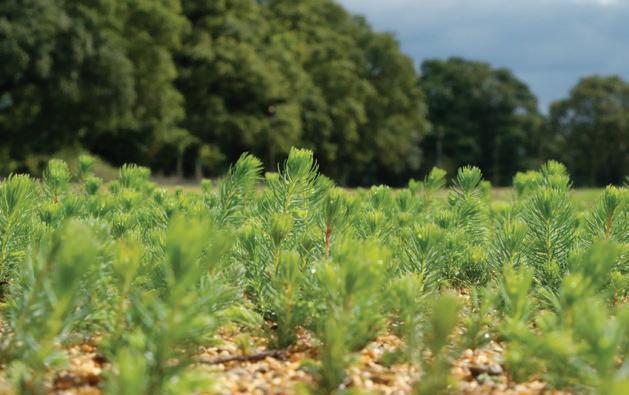
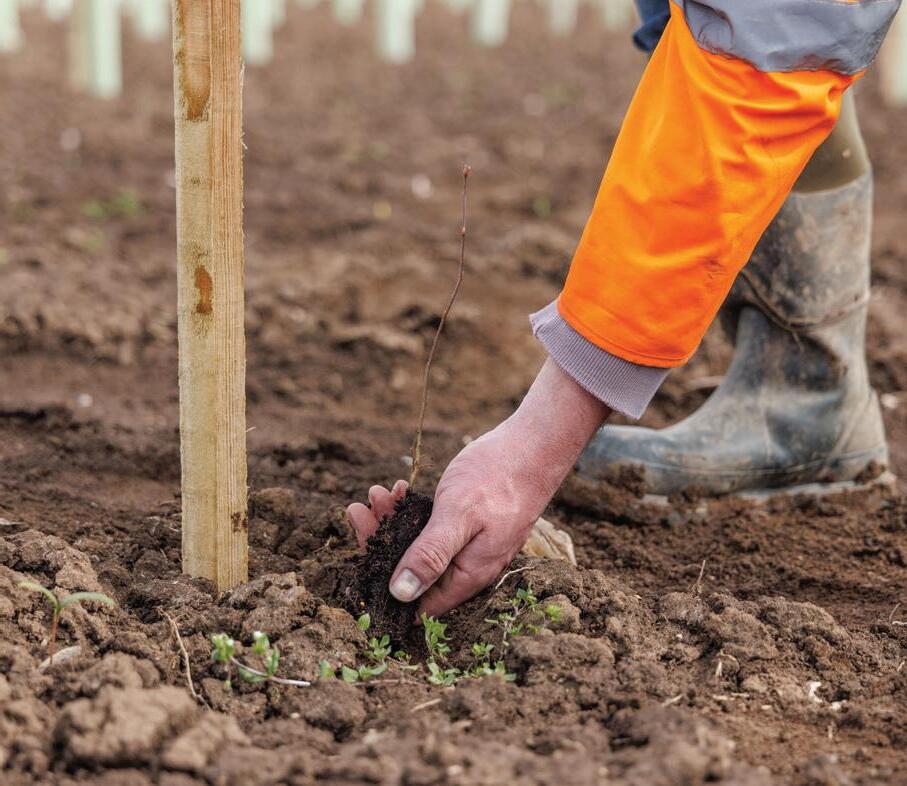
For farmers looking to plant trees, we offer a unique partnership to design, plant and manage the trees and sell the carbon units for you.

FENDT
332



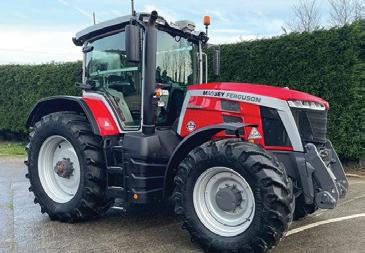

MF
Tyres:


MF





